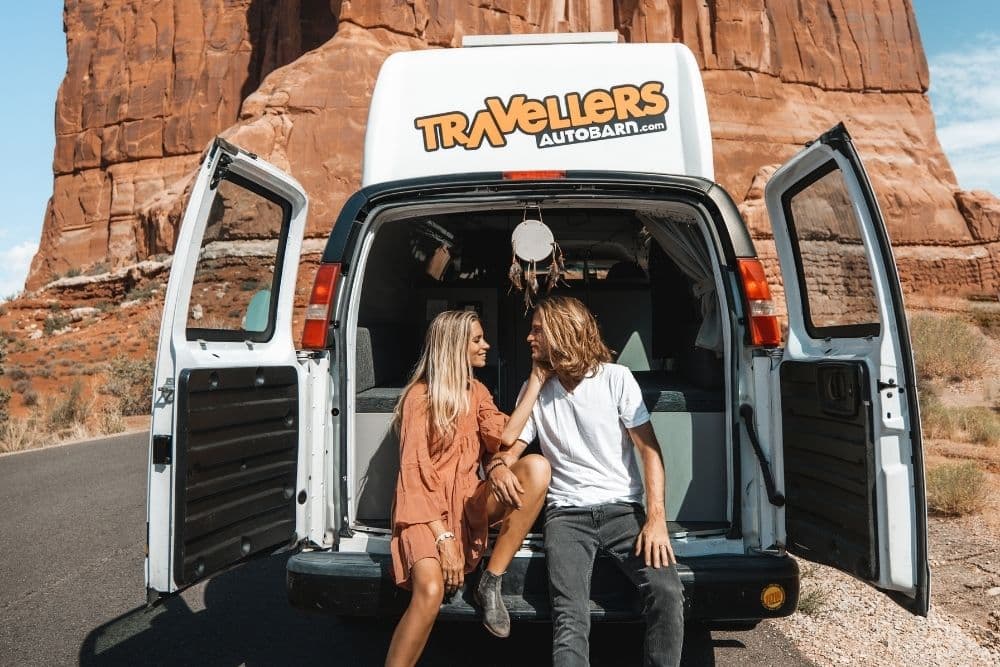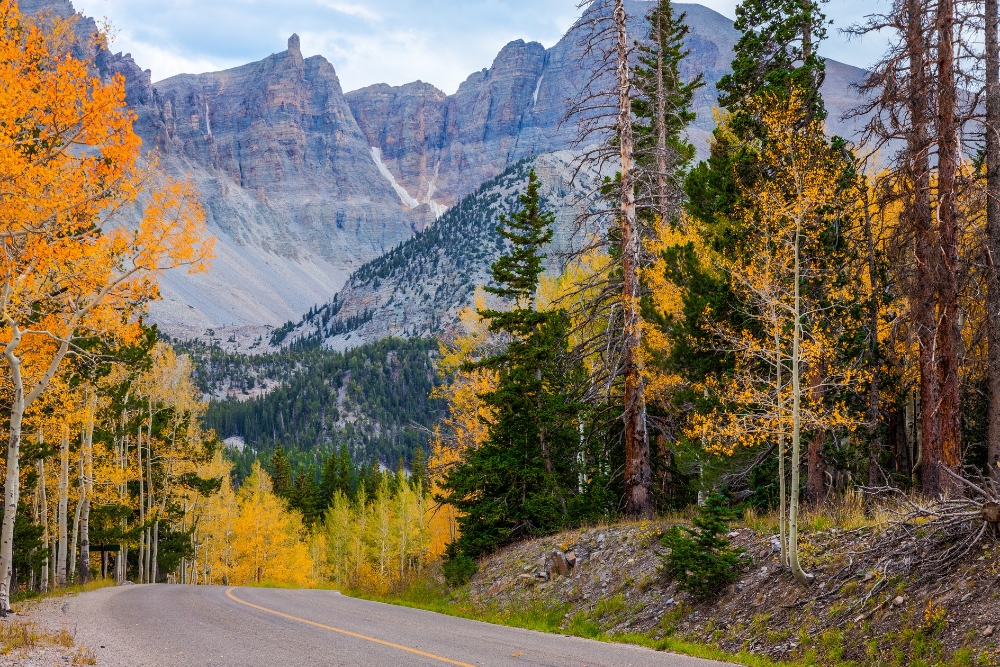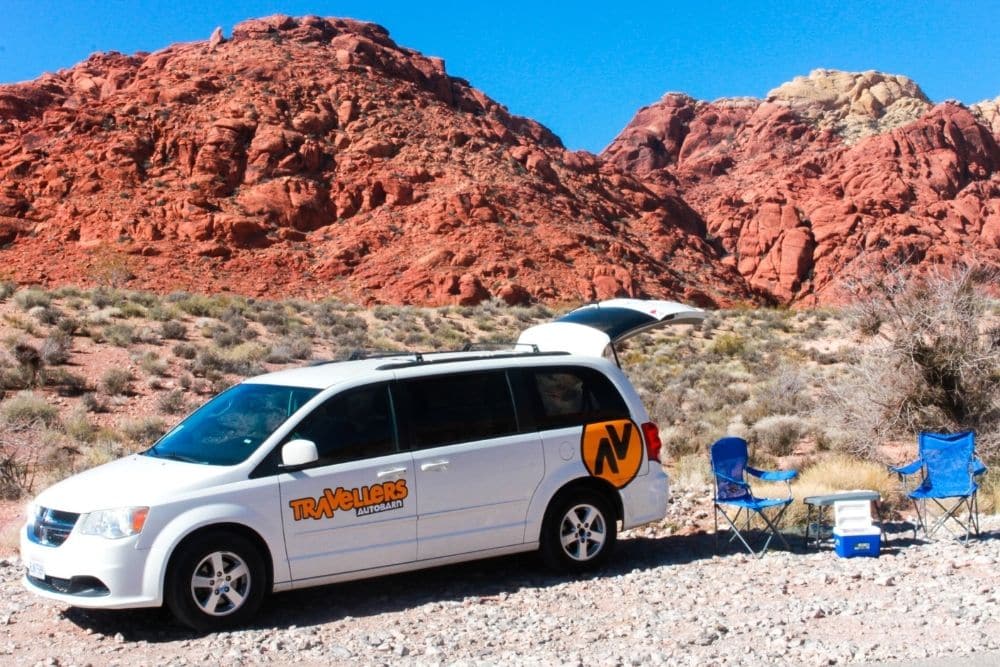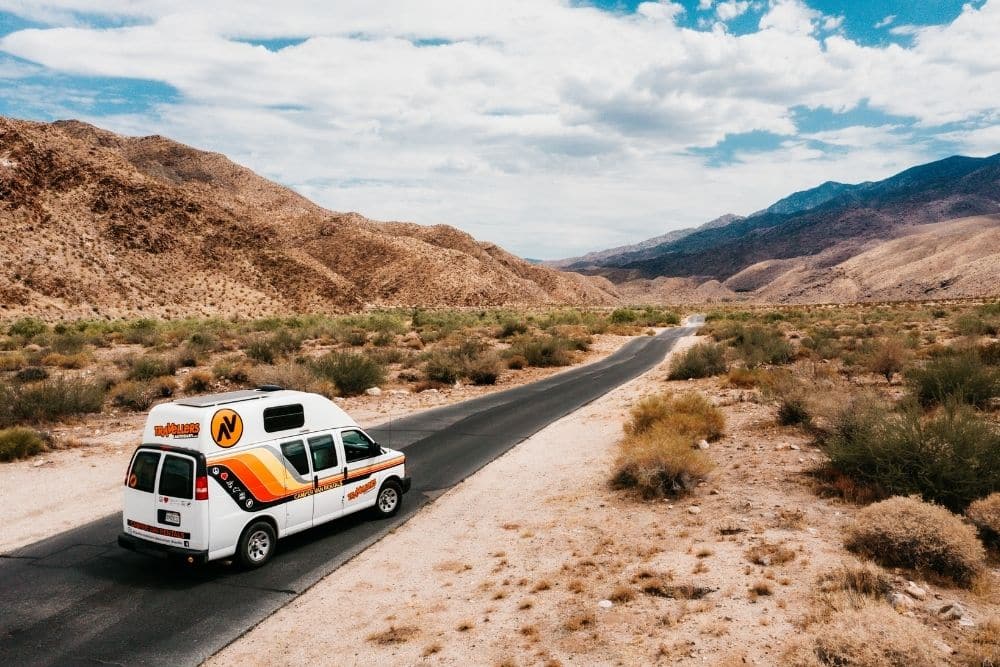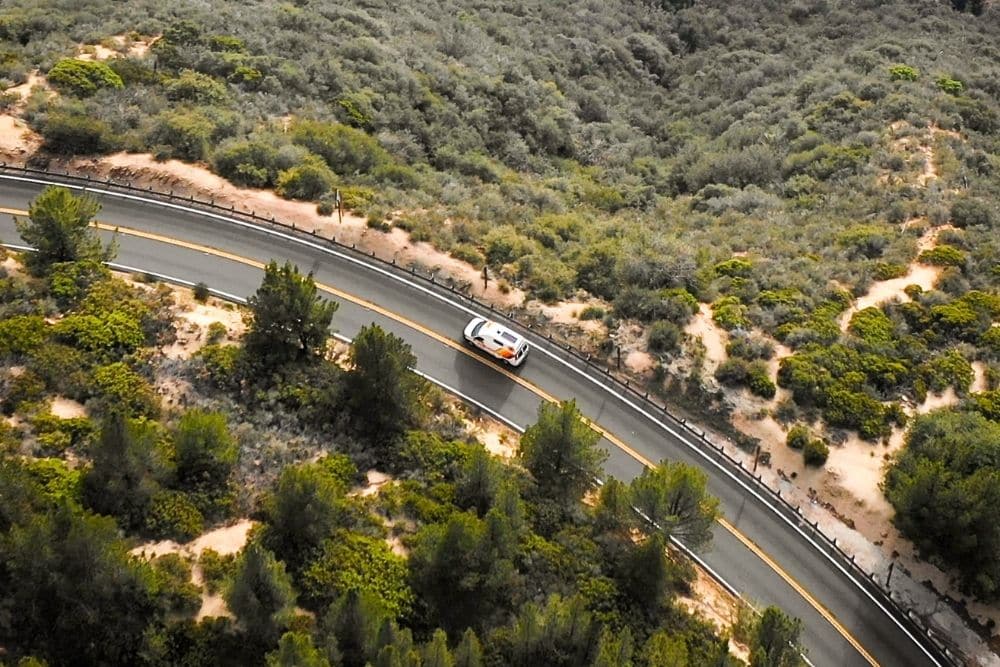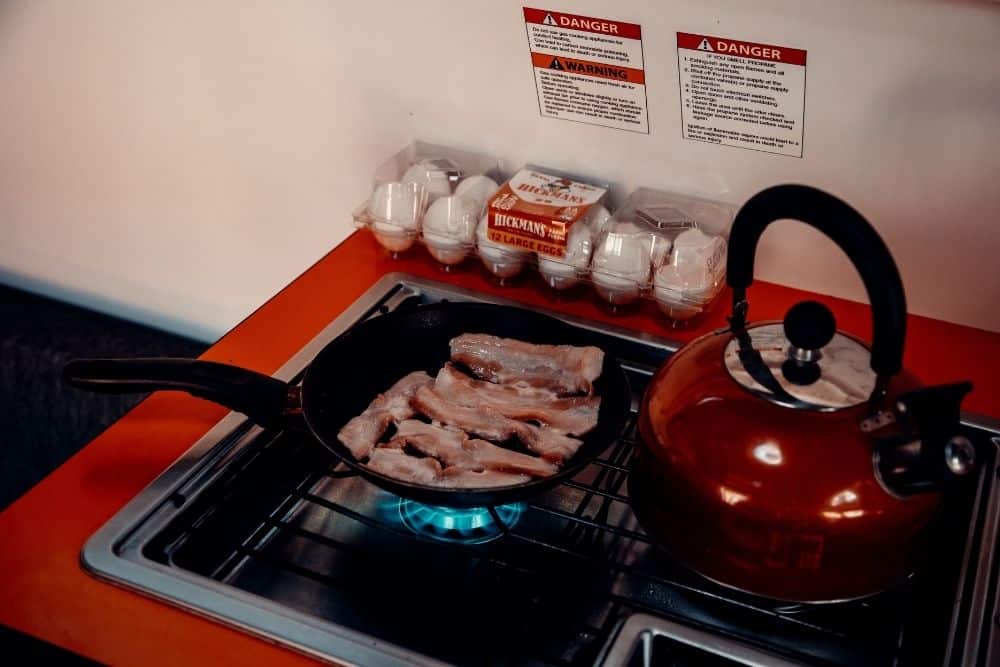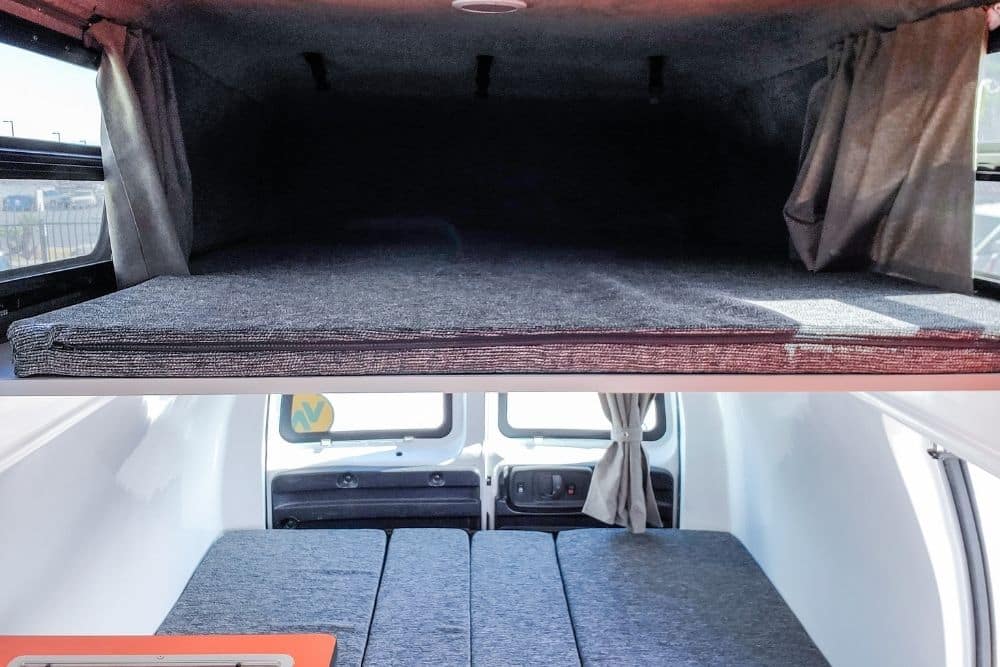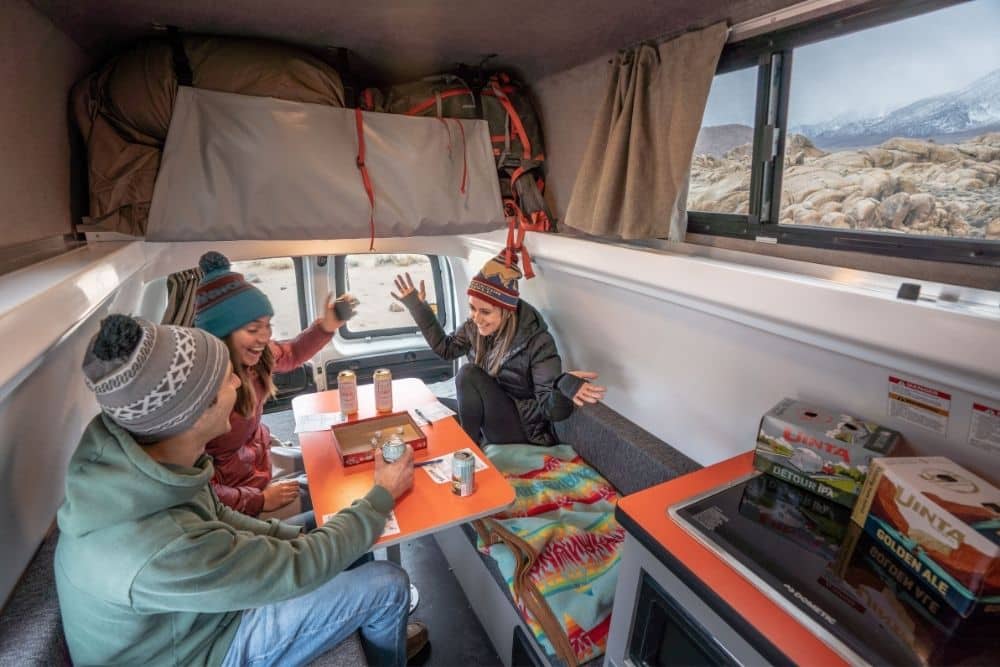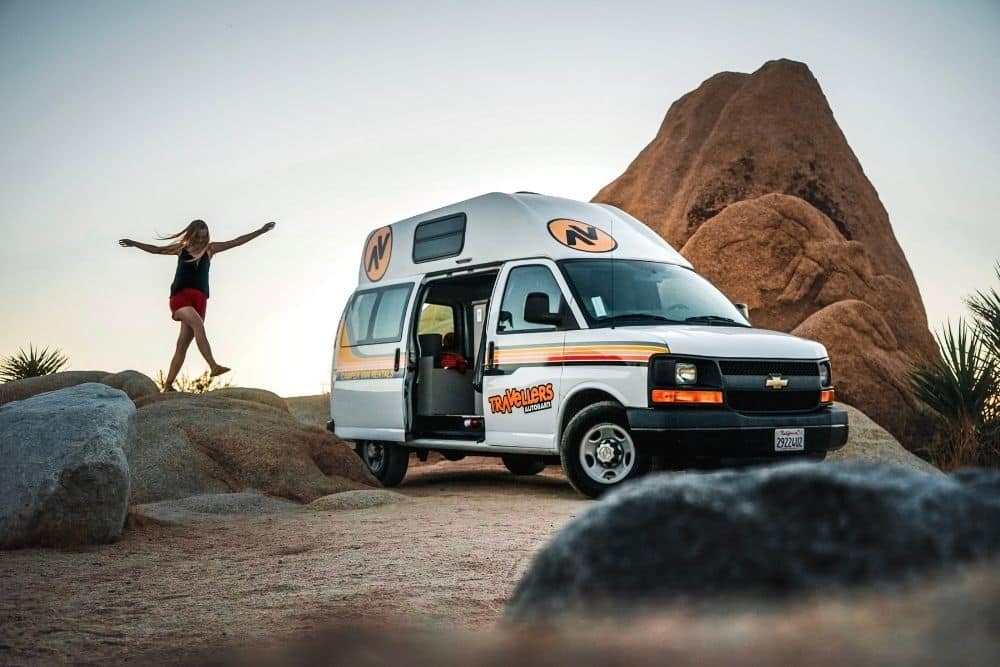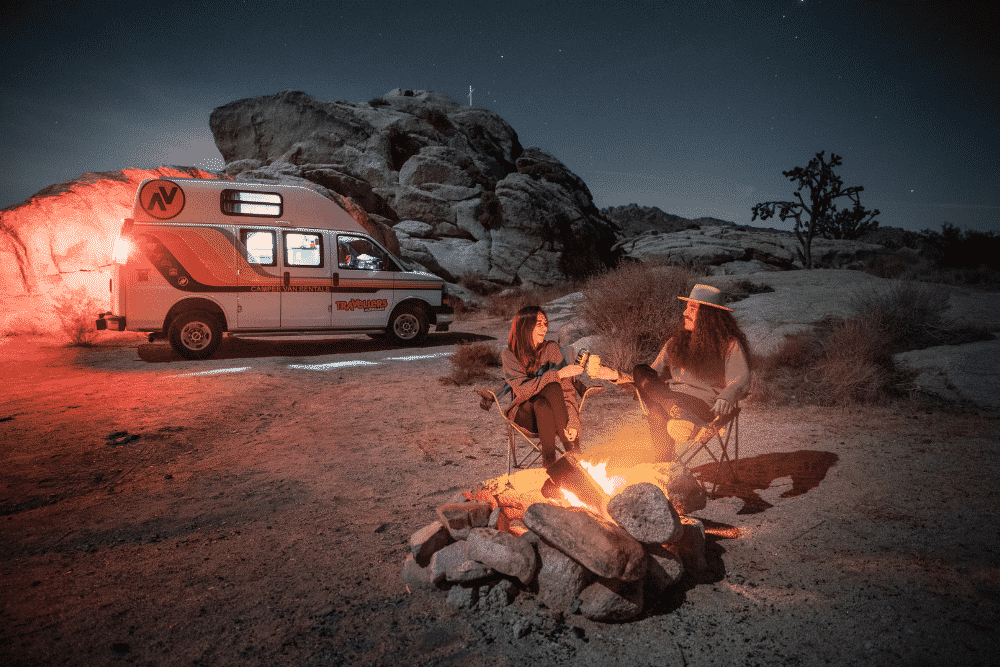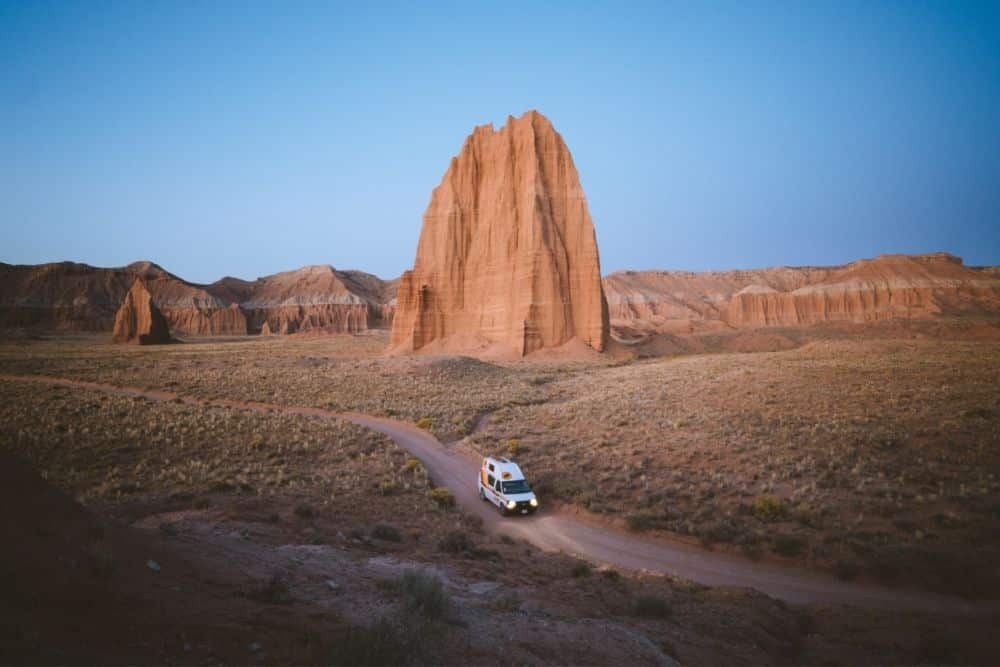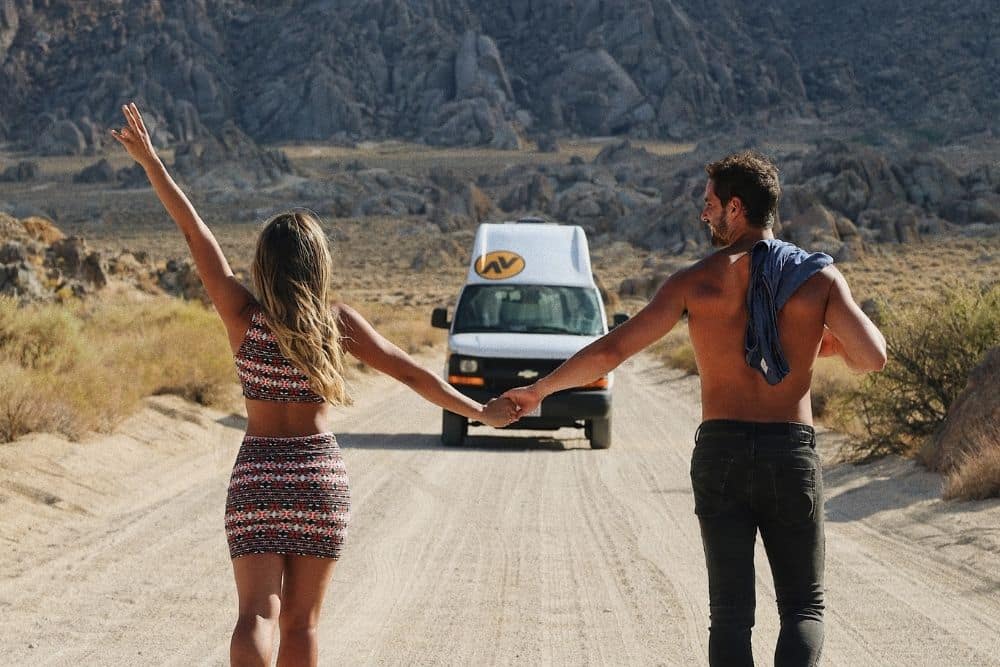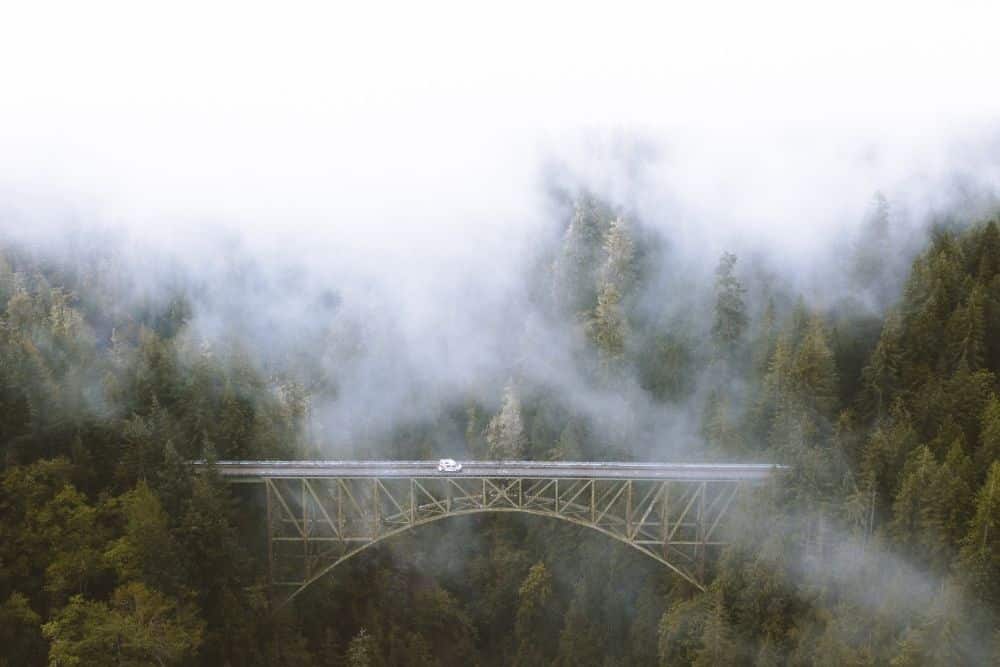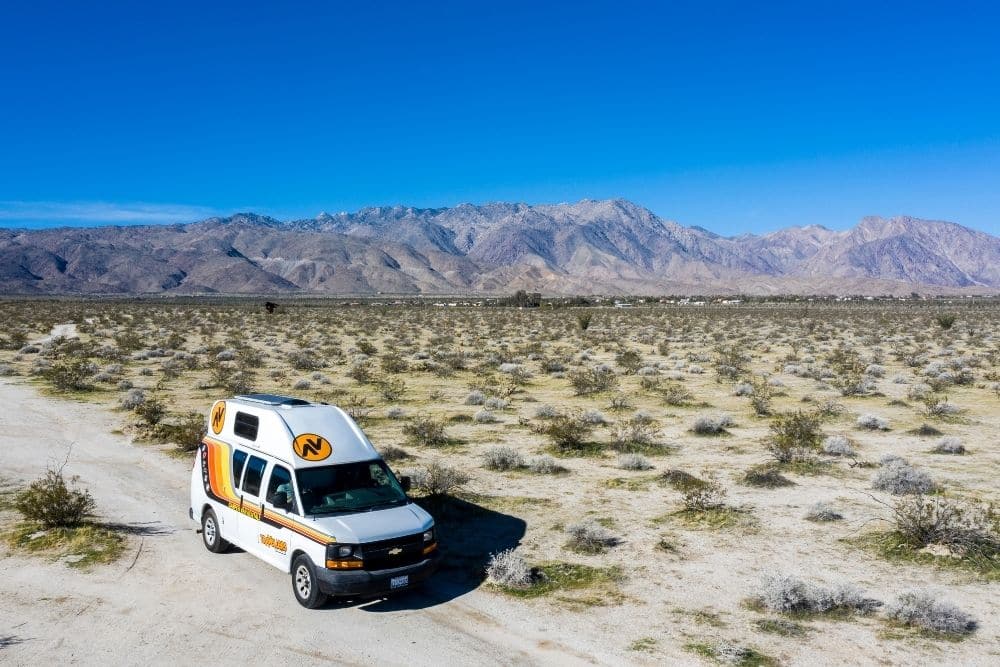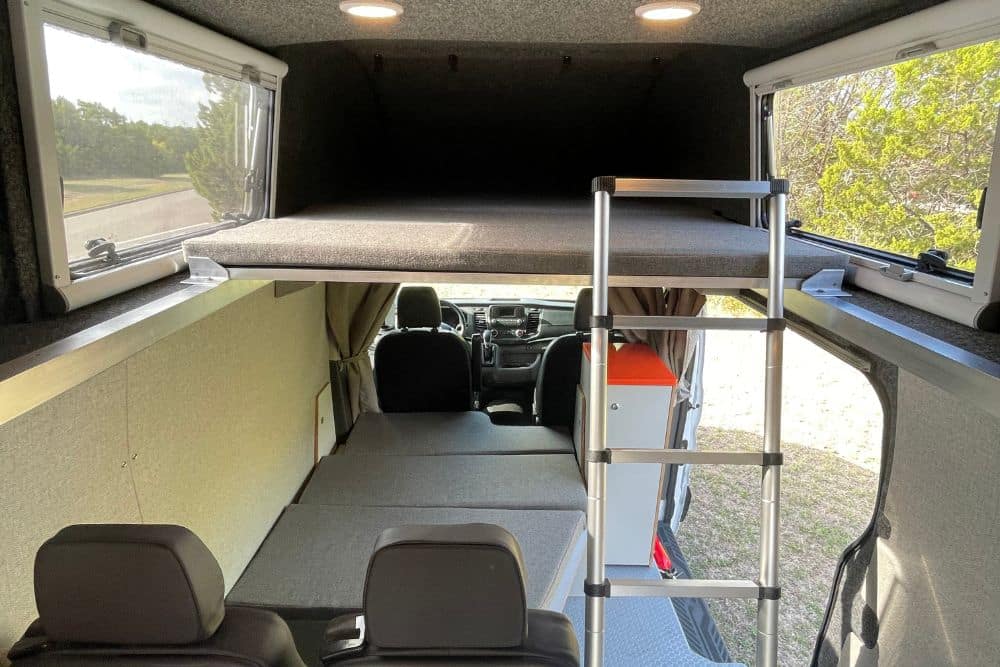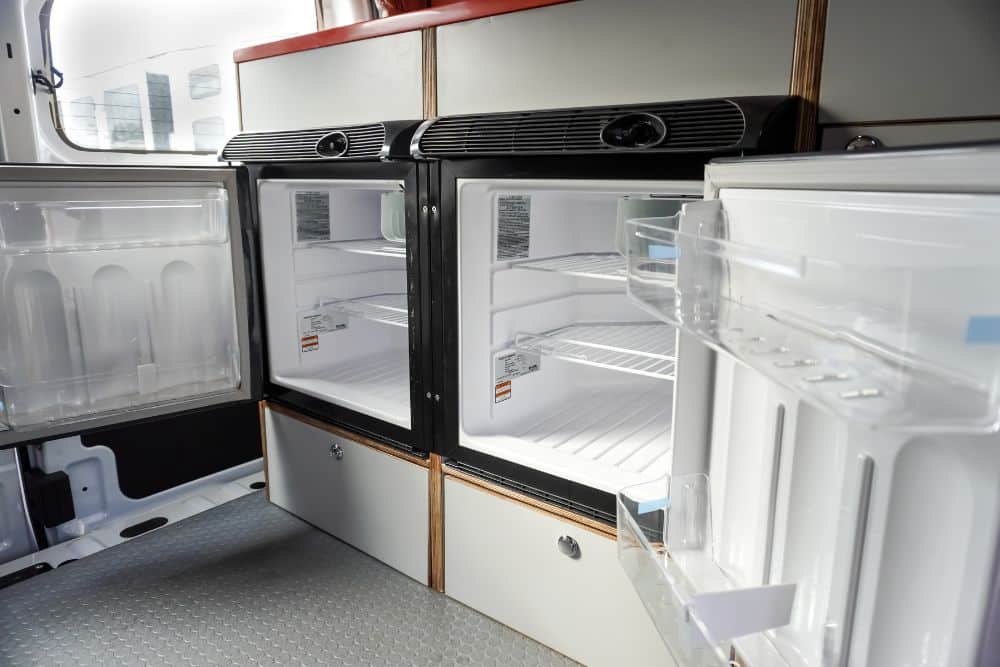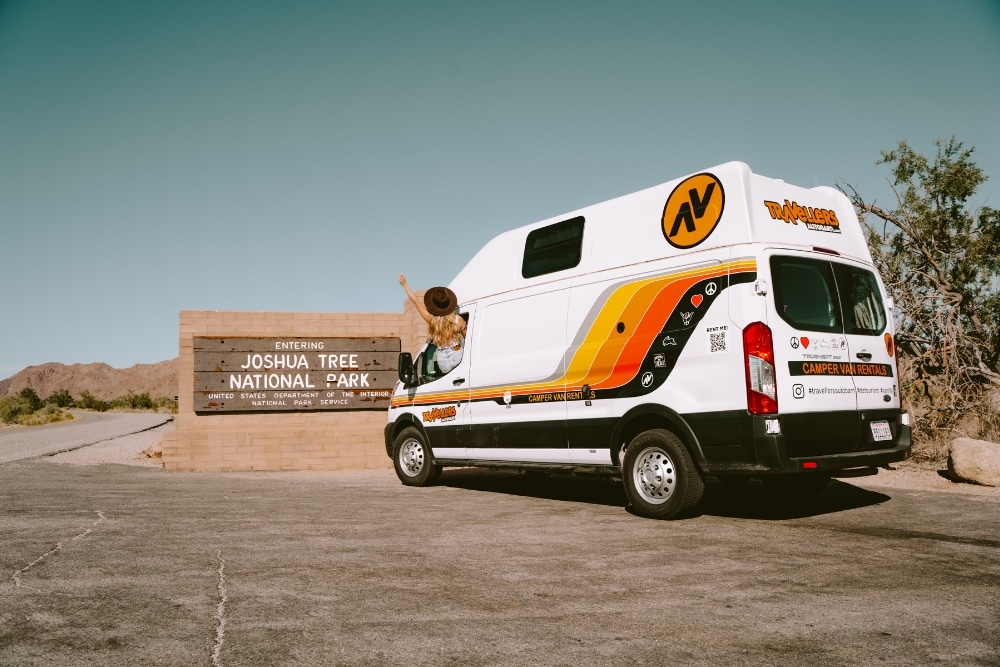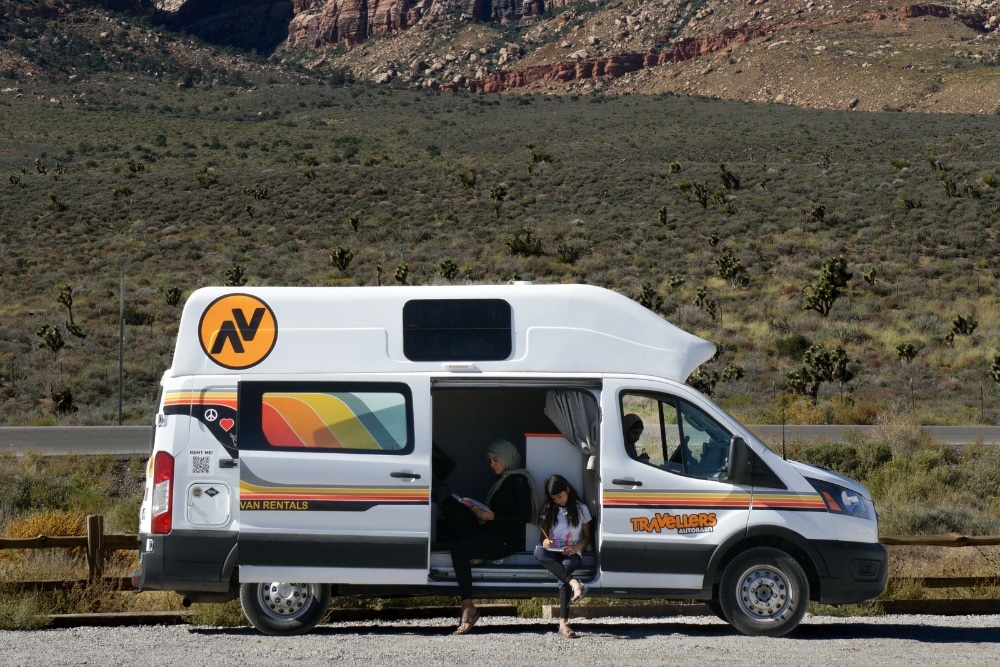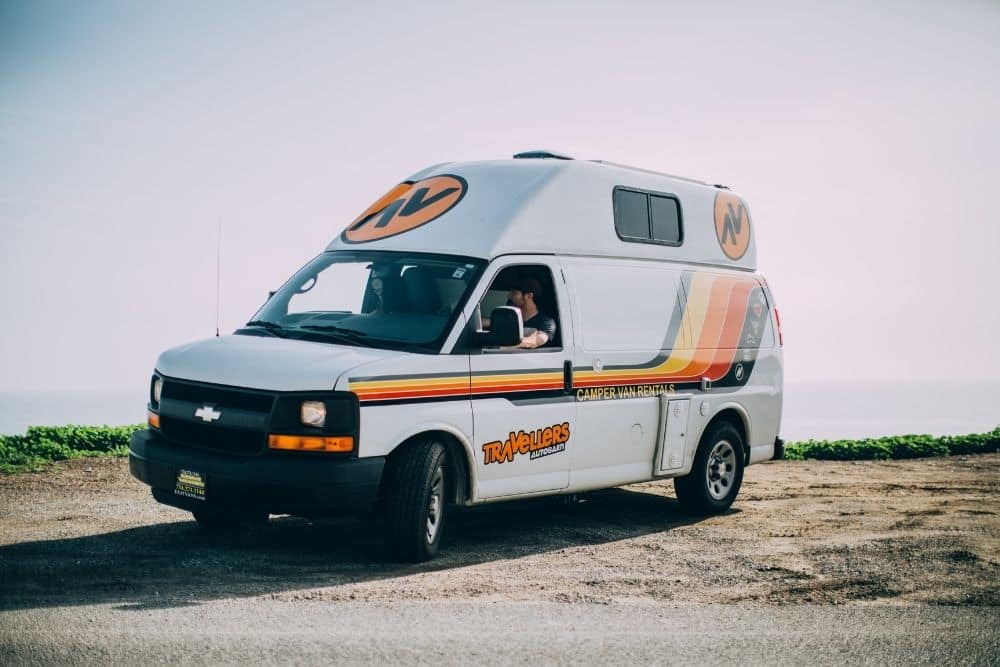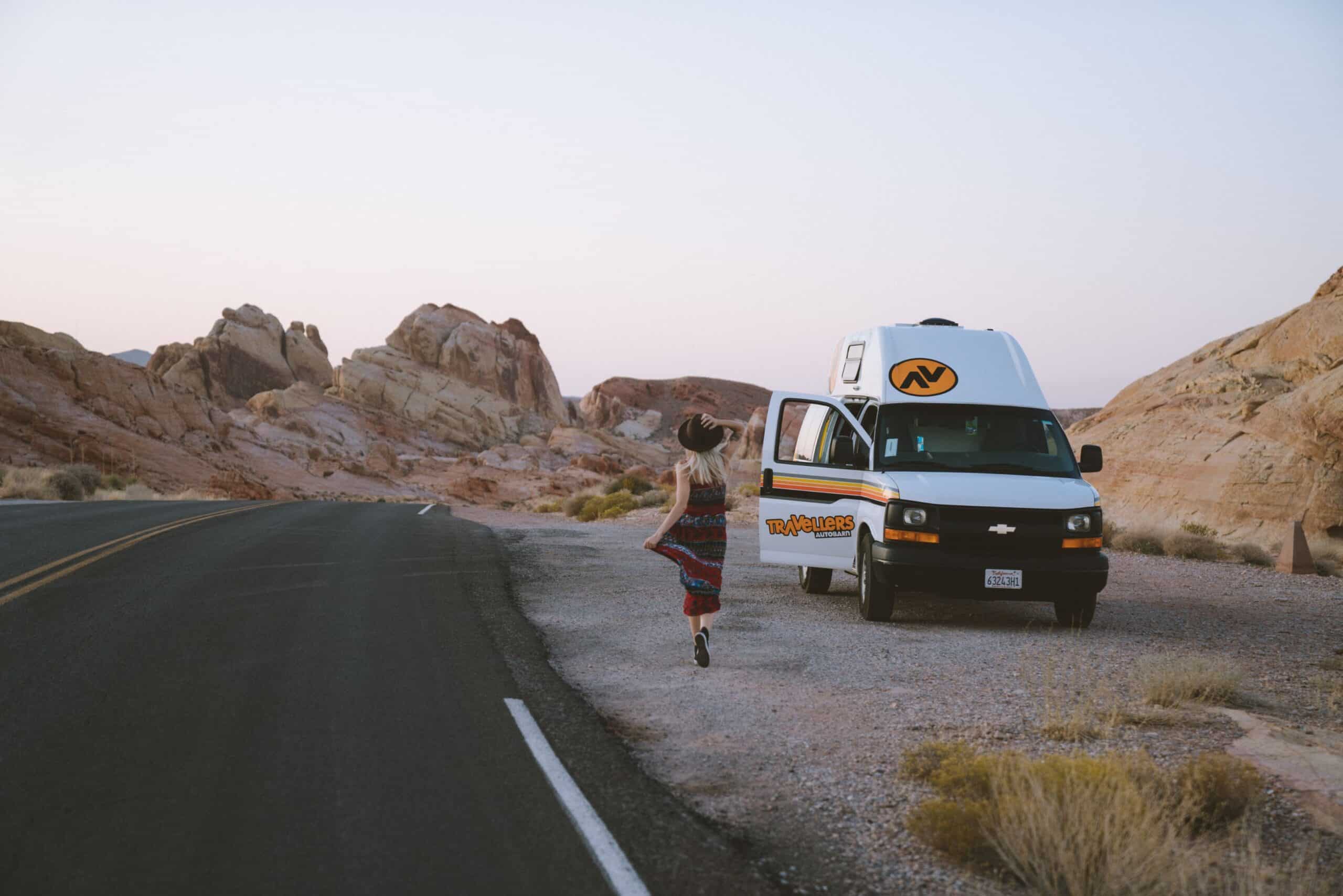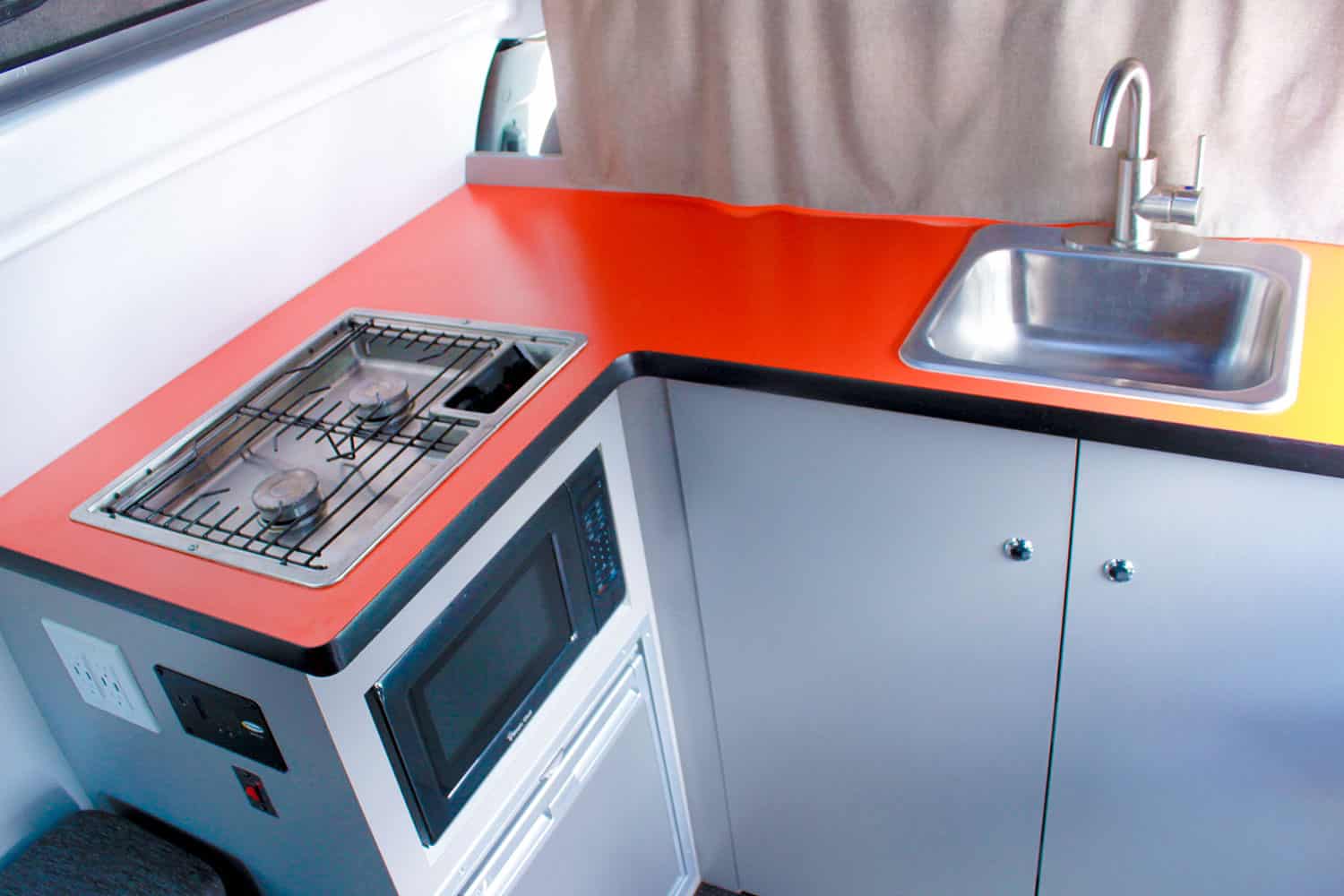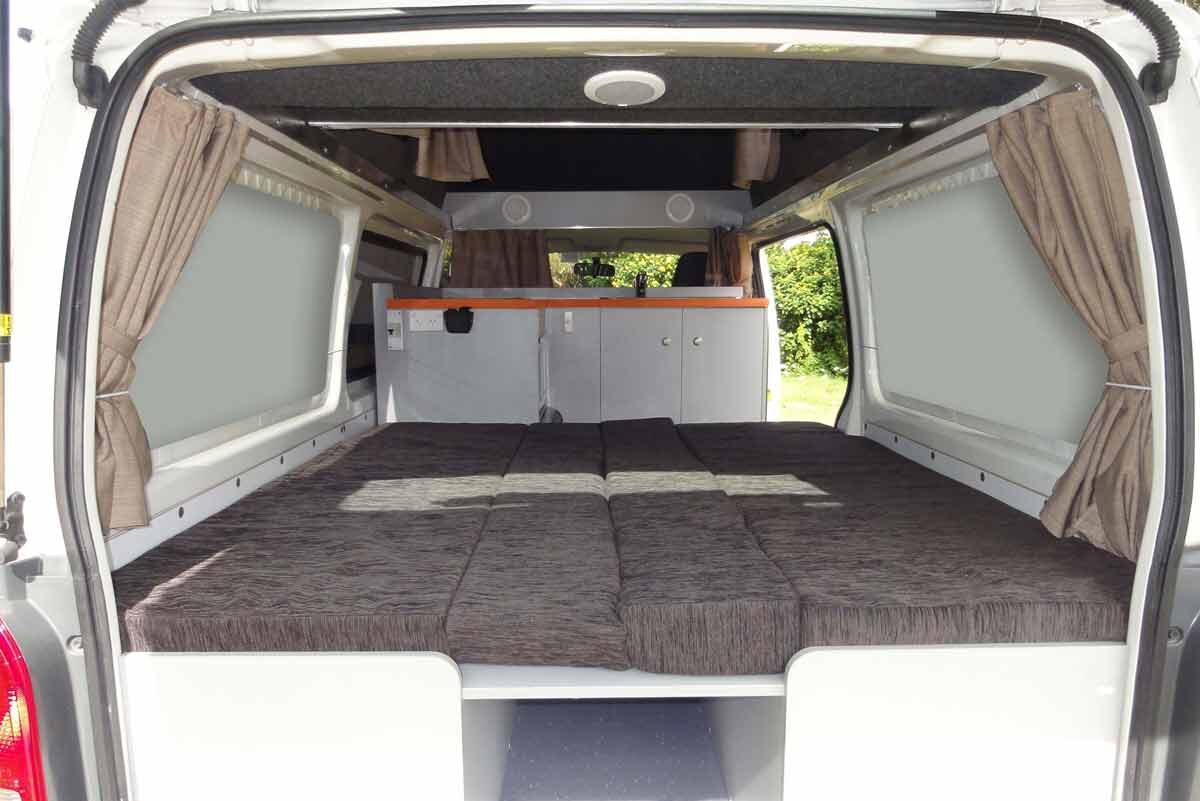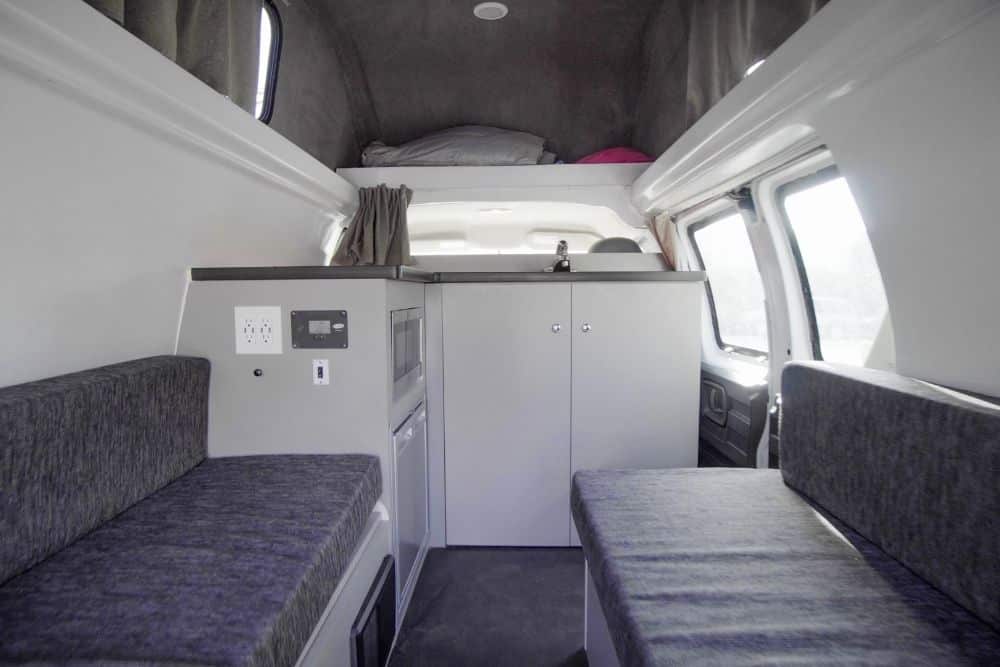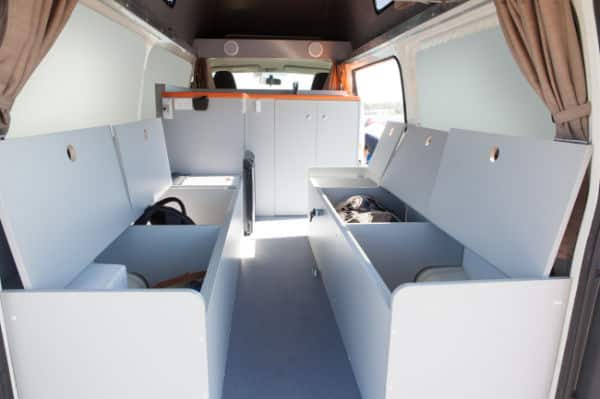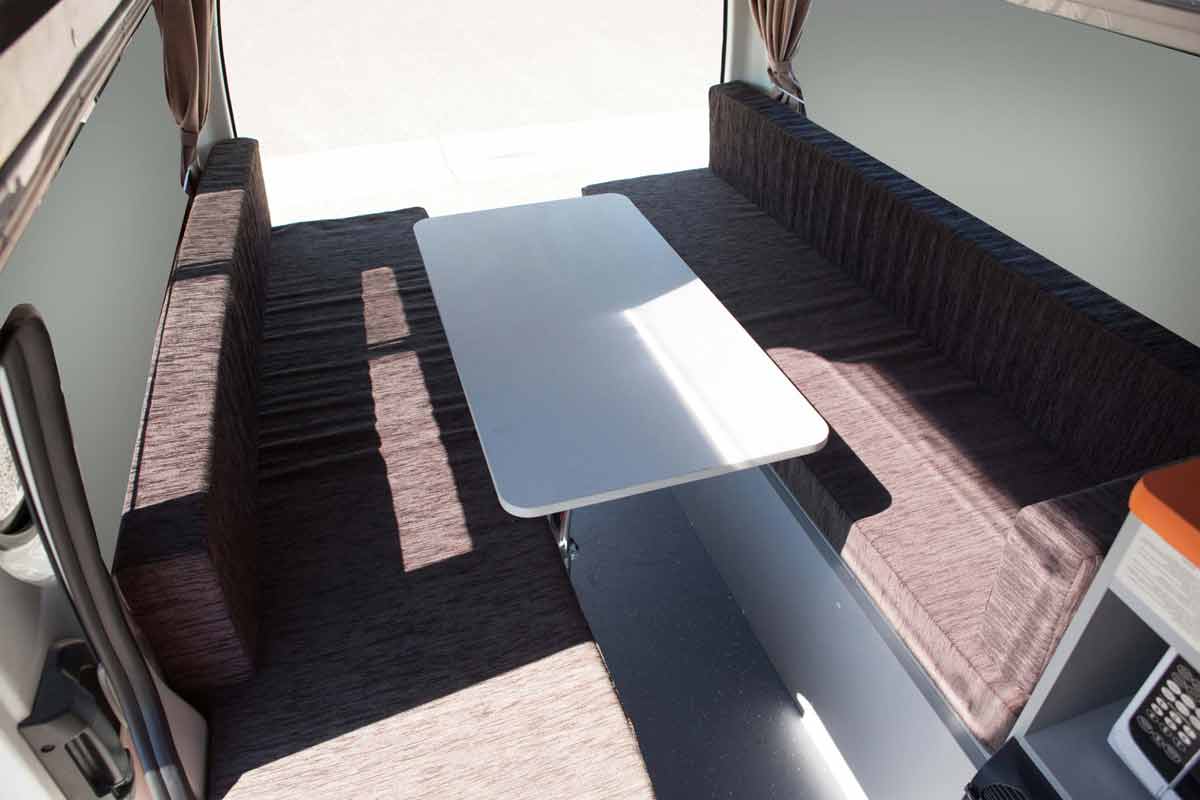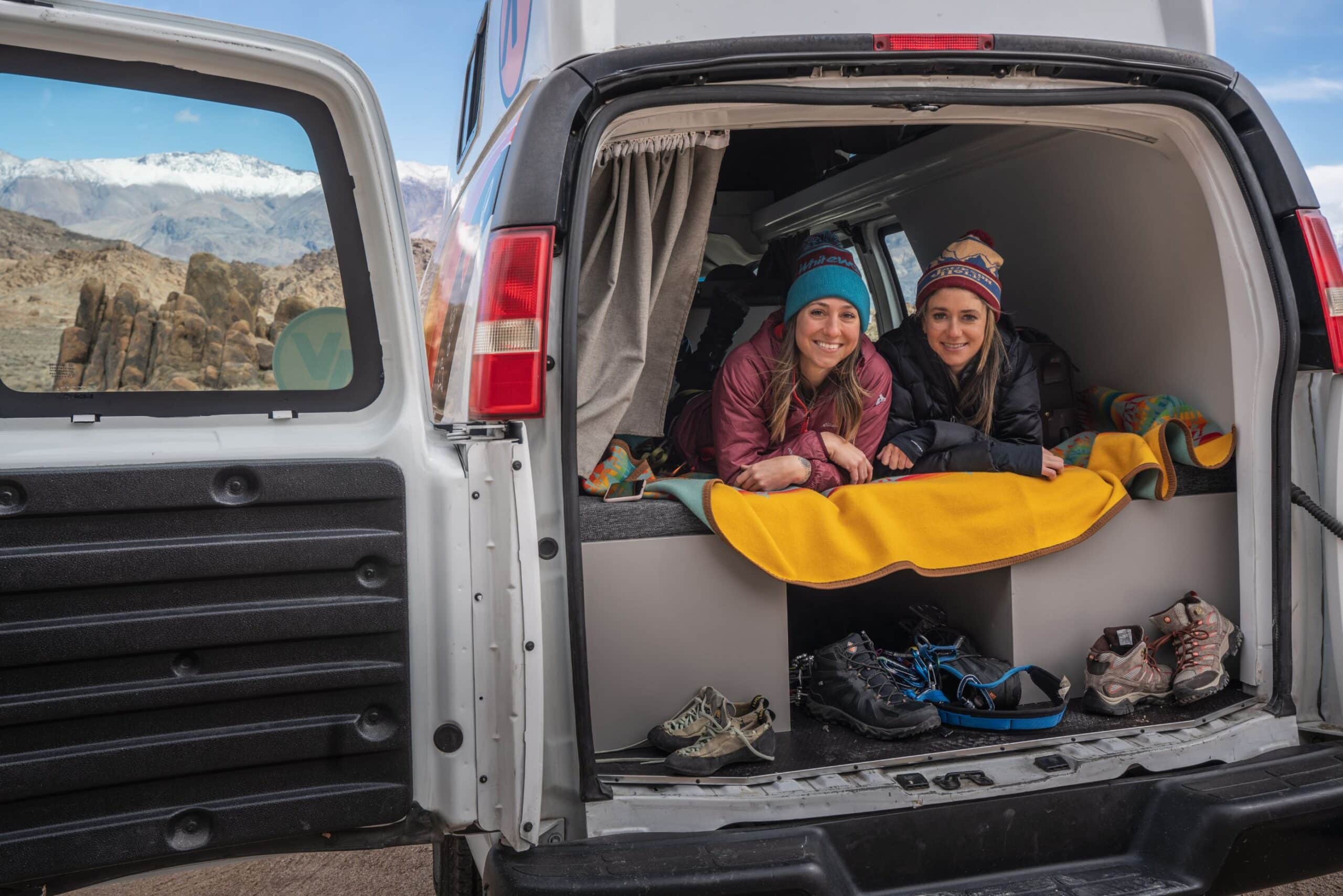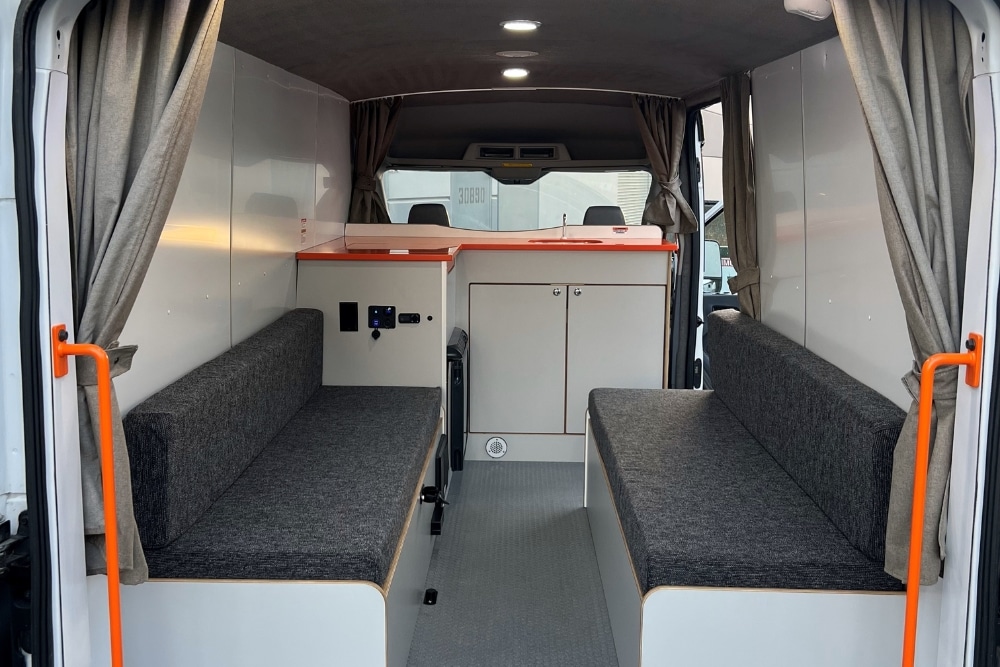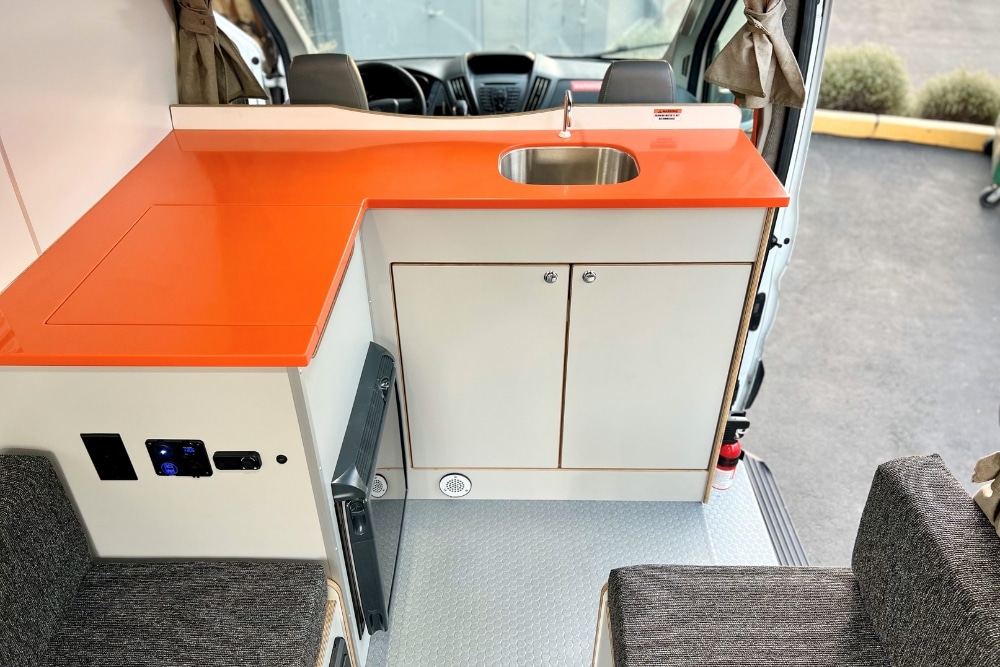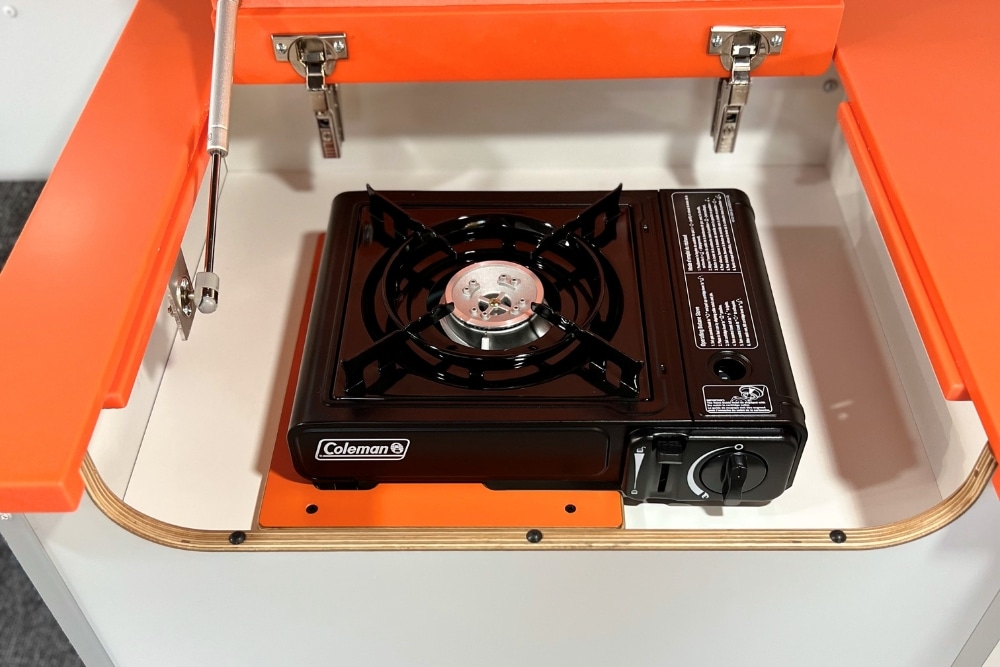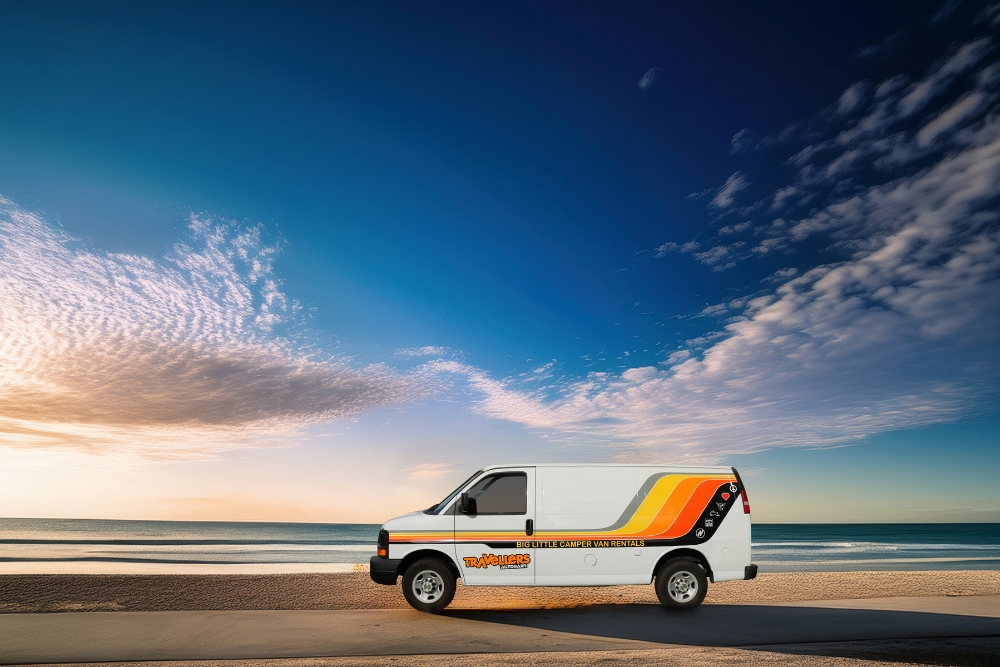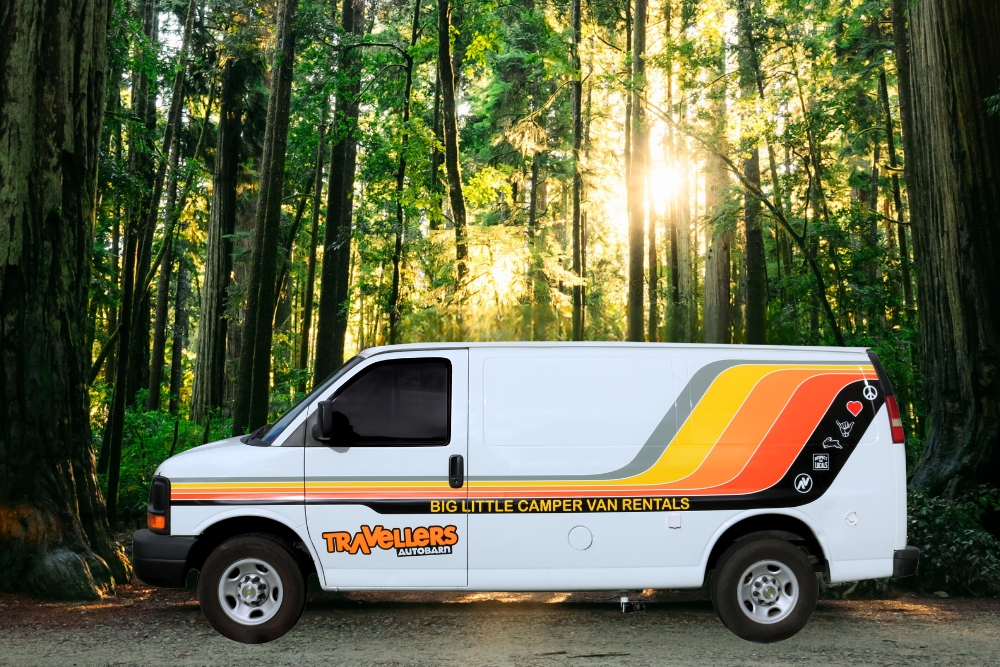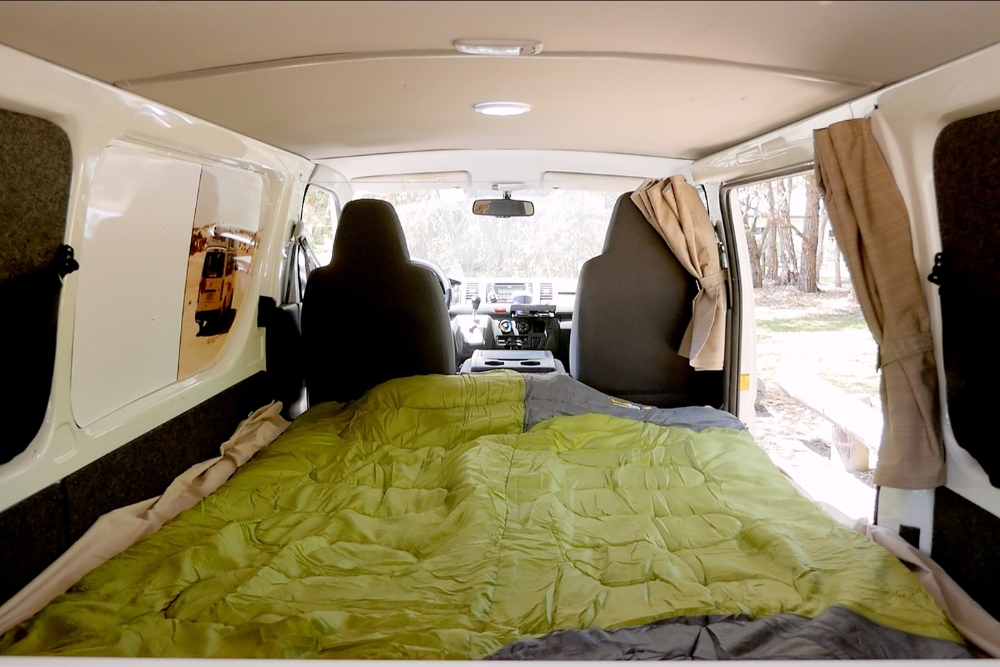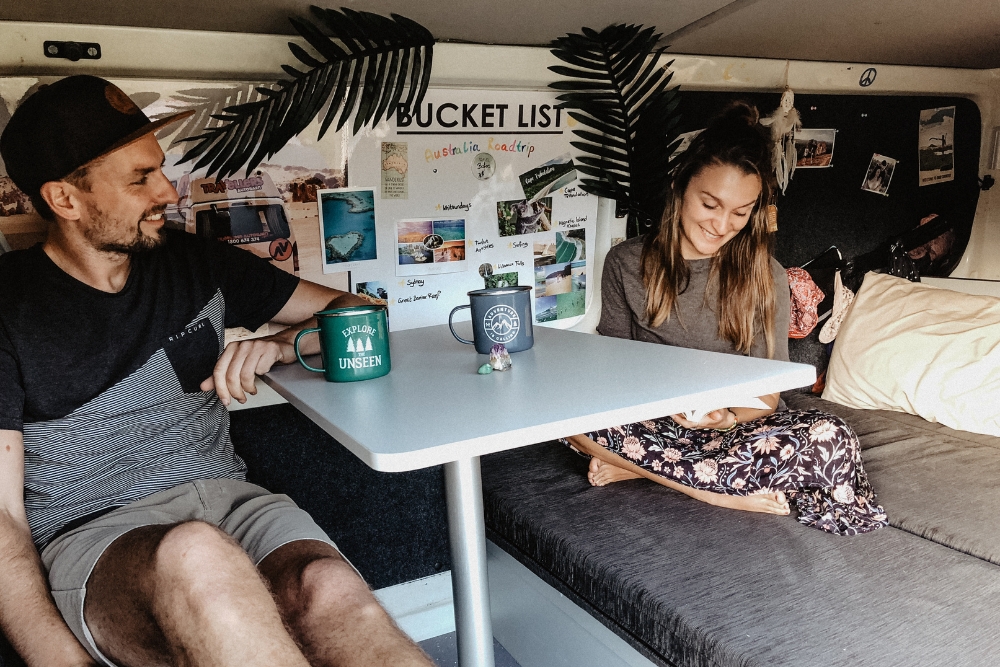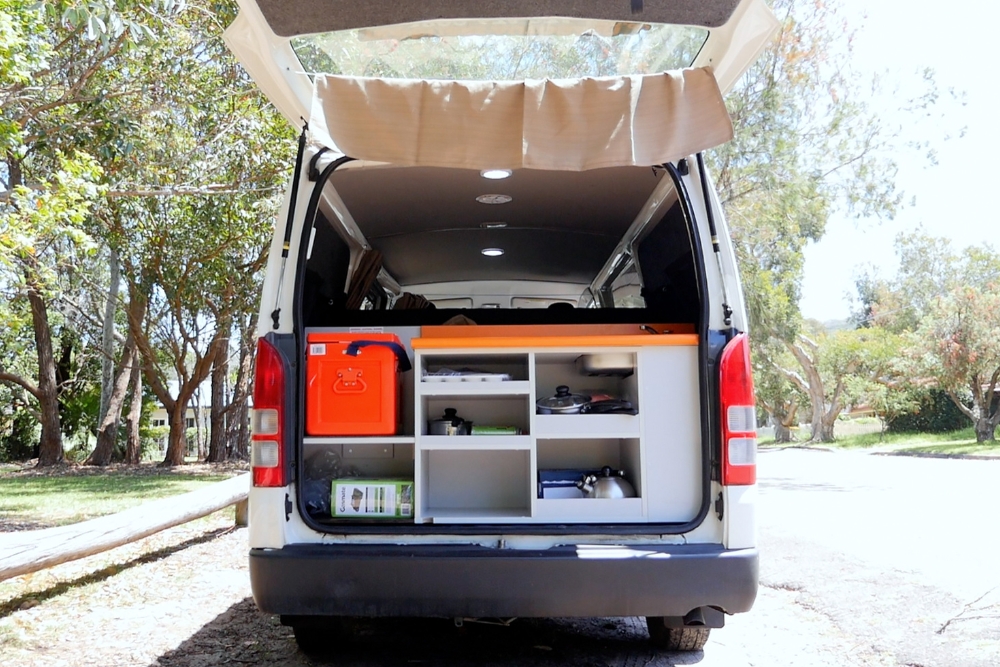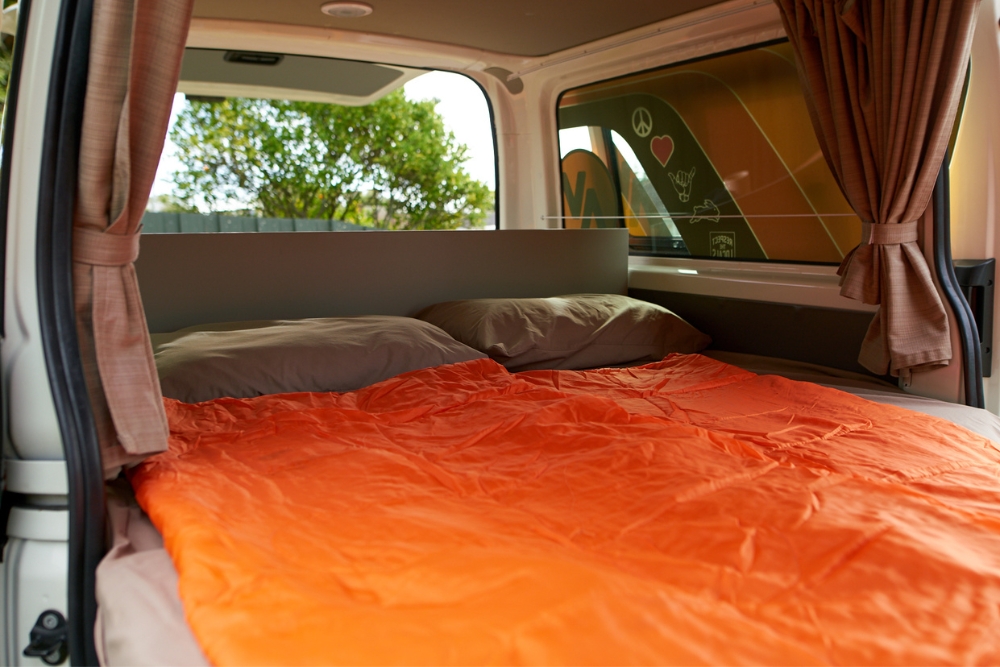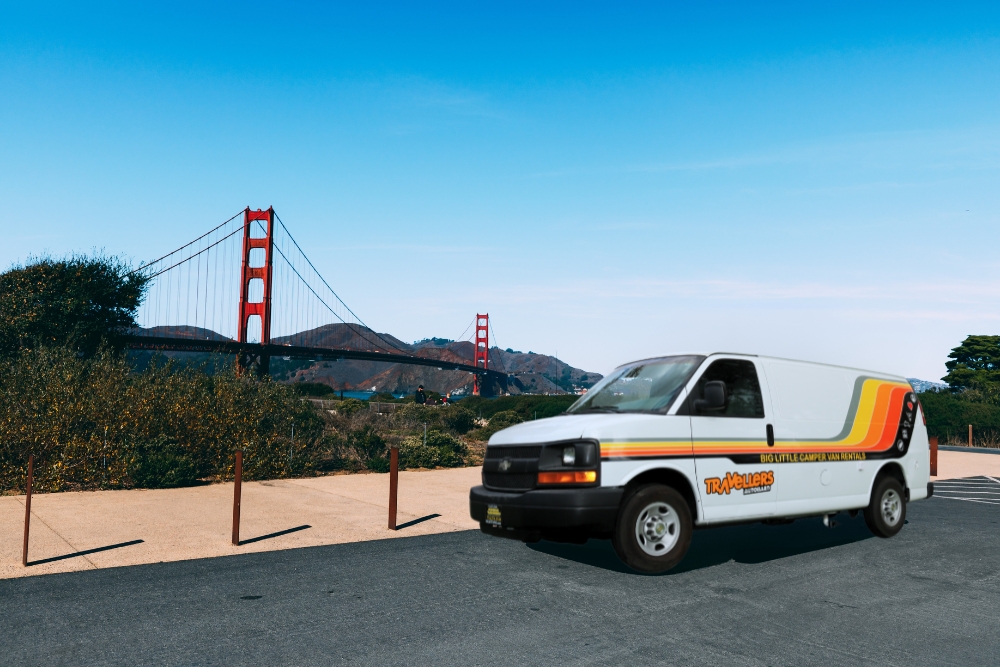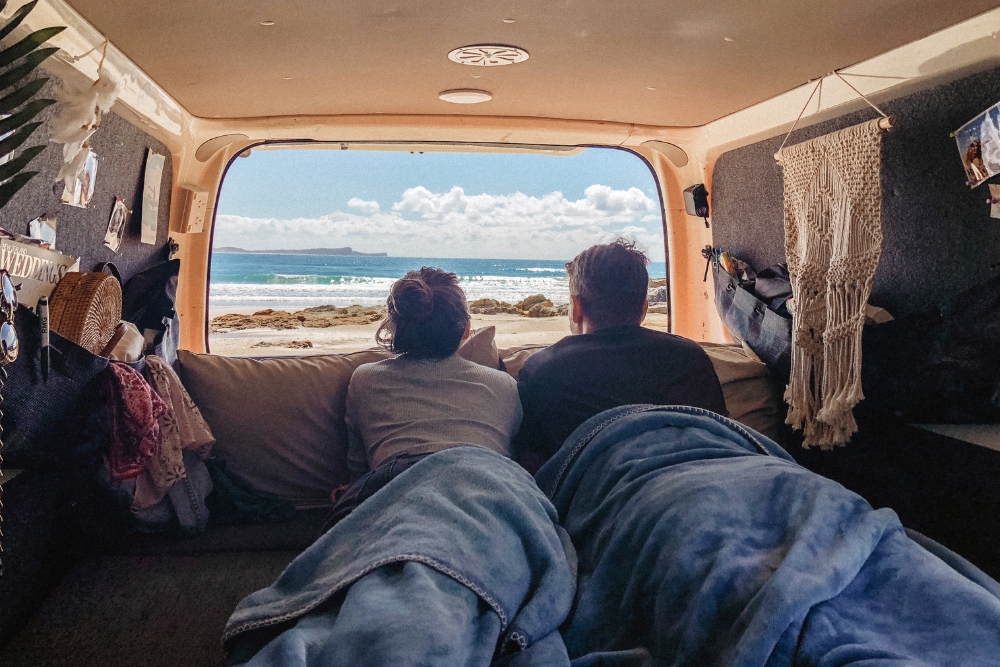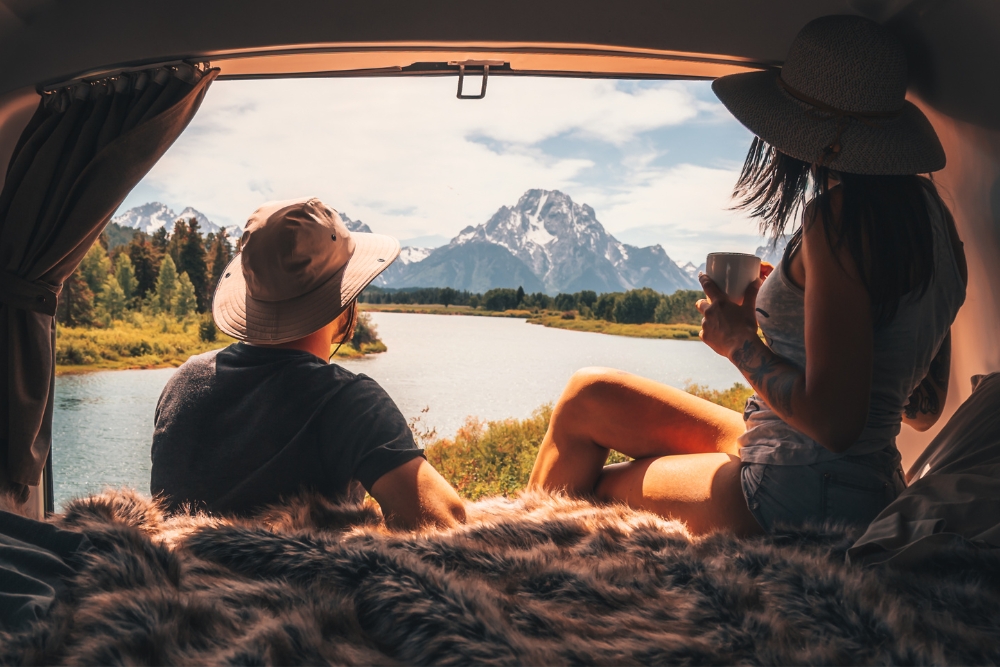One of the best times to visit some of our beautiful national parks is during the winter. We’re going to tell you which ones so you can plan a campervan winter getaway.
We recommend visiting all of the national parks in the United States in the winter. However, some have piqued our interest more than others when it comes to this time of the year. Whether it’s the crisp snowy weather, less crowded visits, or particular activities that are only available in the winter – we share our favorites with you today.
If you want to plan the ultimate experience, why not visit the parks in a Travellers Autobarn campervan, which will come with unlimited miles as standard. This way, you can stay right in the park, move about as you please, and escape to the warmth of your blanket and hot cocoa anytime you feel just a bit too chilly. So book your fully-loaded campervan and get ready for the ultimate trip to one (or many) of the best national parks to take your campervan in the winter.
Sequoia & Kings Canyon National Park

Picture this: 1,300 square miles of huge Sequoia trees you’ve been dreaming about, glistening white snow and the majestic bison strolling through the snow-layered canyon. Can you tell me a better time to see rarities like the General Sherman Tree- the most massive tree on Earth?
And it doesn’t stop there. There are several fun activities to try in Sequoia and Kings in the winter, like the Crystal Cave, King’s Canyon, and Moro Rock. Break out your snowshoes and skis and get ready for an adventure through the newly white landscapes.
There are also hills for sledding. Are you someone who lives in a place with little or no snow but always wondered what it would be like to do all those traditional winter activities? Well, here is your opportunity to try them!
Winter Activities You Can Enjoy at Sequoia & Kings Canyon National Park
- Snowshoeing through the Giant Forest to see the towering sequoias blanketed in snow
- Cross country skiing on groomed trails or through the backcountry for stunning winter scenery
- Sledding and tubing at Big Stump or Wolverton Snowplay Area
- Ranger-led snowshoe walks and educational programs, where you’ll learn more about the winter ecosystem
Winter Weather Conditions at Sequoia & Kings Canyon National Park
Snow usually begins falling in November and can last until April at Sequoia & Kings Canyon National Park, transforming the park into a winter wonderland! Daytime temperatures often range from the low 20s to mid 30s°F, while nighttime temperatures can plunge well below freezing. At lower elevations, you may experience rain instead of snow, but the roads leading to the park’s higher elevations, such as the General’s Highway, can become icy and challenging to navigate and tire chains are often required.
Yosemite National Park

Yosemite National Park, located in the majestic Sierra Nevada Mountains in California, is stunning in the winter months. Some parts are closed in the winter; however, many are open year-round to offer you a view of massive granite cliffs and ancient trees under the blanket of snow.
Badger Pass Road is plowed during the winter months to allow access to its beautiful ski area. Here you can do downhill and cross-country skiing. If it’s hiking you’re after, your options will be more limited, but still possible in Yosemite Valley and Wawona.
And if you’re ready to move inside for a break from the cold, or you’re not much of an outdoorsman, there are scenic drives that will blow you away! You’ll make memories that you will never forget. Don’t forget to take pictures!
Winter Activities You Can Enjoy at Yosemite National Park
- Ice skating the outdoor rink in Curry Village
- Snowshoeing to Mirror Lake or around Mariposa Grove’s giant sequoias
- Cross country skiing on trails leading to breathtaking viewpoints like Glacier Point
- Photographing Yosemite’s iconic landmarks, including Half Dome and El Capitan
- Stargazing in the clear, crisp winter skies without any light pollution
Winter Weather Conditions at Yosemite National Park
Winter in Yosemite National Park is a dramatic shift from its summer splendor, with snow blanketing the valley floor and higher elevations. Snowfall can begin as early as November and continue into March, with January and February being the peak months, and daytime temperatures in the valley range from the mid 30s to mid 50s°F, while higher elevations can be much colder, often staying below freezing.
Glacier National Park
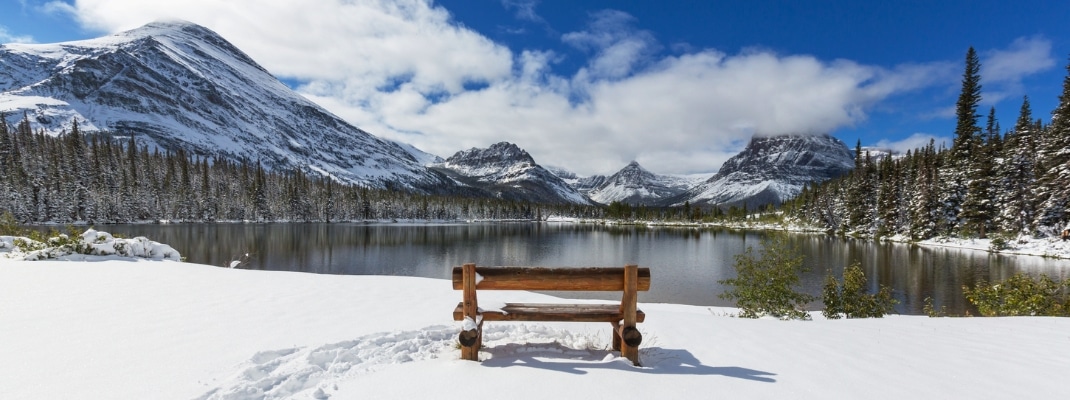
I think we’d be pretty crazy not to mention Glacier National Park, in northwest Montana, in a post about parks to take a campervan during the winter. I mean, when would be the best time to see glaciers? Enough said.
With its incredible geology, Glacier is simply magical, especially during the winter. Apgar Village, 11 miles of Going-to-the-Sun Road, and about a mile on the east side of the park, are maintained during the winter and available for you to explore. Be sure to check that the roads are open before you start your journey!
Glacier National Park is a phenomenal place to break out the cross country skis or snowshoes. Snowshoe walks and tours in these open areas are available for you to book to get the most out of your time there. The Apgar visitor center is open during the winter months if you plan to DIY it and want to get tips and advice from park rangers.
Winter Activities You Can Enjoy at Glacier National Park
- Cross country skiing along the park’s groomed trails, where you’ll find incredible views of the snowy peaks
- Snowshoeing through the quiet forests and around frozen lakes, including Lake McDonald
- Wildlife spotting, with opportunities to see elk, deer, and even wolves in their natural habitat
- Backcountry skiing and snowboarding on the park’s rugged winter landscape
Winter Weather Conditions at Glacier National Park
Glacier National Park in winter is a land of extremes, with heavy snowfall and frigid temperatures dominating the season. Snowfall can begin as early as October and persist through May, particularly at higher elevations, and the park’s western side, including the Lake McDonald area, receives the heaviest snow, often accumulating several feet deep. Daytime temperatures in winter range from the teens to the 30s°F, while nighttime lows can dip well below zero, especially in the more remote areas of the park.
Zion National Park

The trails! Oh, the trails! Almost all of them stay open during the winter. Even if you’ve hiked there before, you’re in for an entirely new experience in the winter months. Can you imagine the striking red sandstone set against the contrast of a fresh layer of snow? We can!
Our favorite part of Zion is The Narrows hike! But there’s also Angels Landing, Hidden Canyon, Observation Point, too many to name them all!
Just remember, some of the hikes- particularly the Narrows where it starts cooling off in the evenings in the Summer- can get pretty chilly. So make sure to account for that with the proper hiking gear — a dry suit, or a dry pack.
The scenic canyon drive is open during the winter as well, and it’s one you will not want to miss. The shuttle doesn’t run in the winter, but with a converted campervan, you’ll be fine to make the drive yourself. And with far fewer visitors in the winter, you won’t be stuck in heavy traffic or struggling to find parking for photo ops.
Winter Activities You Can Enjoy at Zion National Park
- Exploring the hiking trails in the lower elevations, including Zion Canyon Overlook
- Take photographs of Zion’s towering red rock cliffs, which look particularly beautiful in winter set against the snowy landscapes
- Birdwatching along the Virgin River, with winter offering a chance to spot some migratory bird species
- Drive the scenic trails along the Zion-Mount Carmel Highway, which remains open year-round
- Canyoneering in the park’s slot canyons
Winter Weather Conditions at Zion National Park
Winter in Zion National Park is mild compared to many other national parks, making it a popular destination for cold-weather travelers. Snowfall is infrequent and generally light, mainly dusting the higher elevations, while the canyon floor usually remains snow-free. Daytime temperatures tend to range from the mid 40s to 60s°F, creating pleasant conditions for hiking and exploring. However, nights can be chilly, with temperatures occasionally dropping below freezing. Winter storms can also bring temporary closures to some trails, especially those at higher elevations, due to icy conditions.
Yellowstone National Park & The Grand Tetons
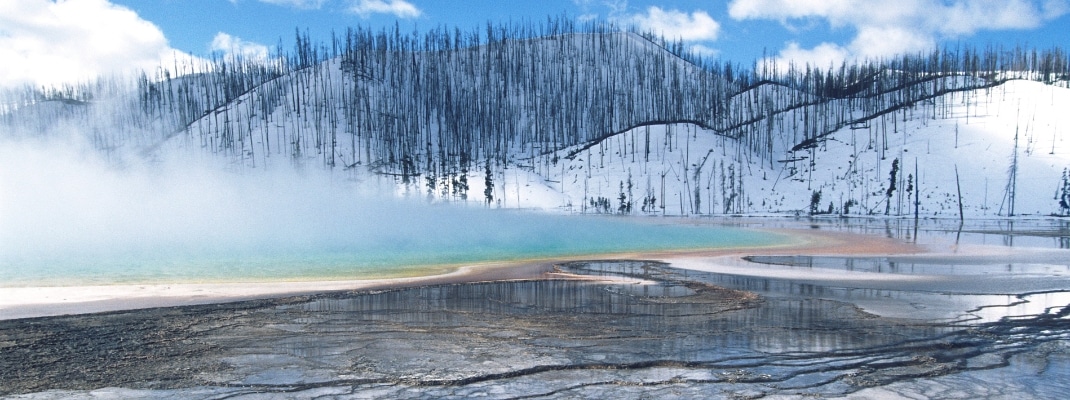
First off, you should know that Yellowstone, the world’s first national park, reports nearly two million fewer visitors in the winter months. So you can enjoy the snow-covered scenery in solitude.
Not all activities are possible during the heavy snow months, but what is available is so very worth the trip. You can take a snowmobile or snowcoach tour around the park to spot wildlife and other notable sights like Old Faithful.
Just down the road at Grand Teton National Park, you can go snowshoeing and skiing in the areas that remain open in the winter. You can also book a wildlife tour, which is pretty amazing during the winter. The winter is when many of the big animals like moose, elk, bison, and sheep are out and about enjoying the chilly weather. You can also take in the beautiful Teton mountain range.
If you’d like to take a drive, note that the inner portions of the scenic drive are closed in the winter. The outer three miles in either direction are usually open in the winter months.
Winter Activities You Can Enjoy at Yellowstone National Park & The Grand Tetons
- Take a guided snowmobile tour through Yellowstone’s snowy landscapes
- Cross country skiing and snowshoeing on groomed trails with views of geysers and hot springs
- Wildlife watching with the winter season offering the chance to spot wolves, bison, and elk
- Ice climbing and backcountry skiing in the rugged terrain of the Grand Tetons
Winter Weather Conditions at Yellowstone National Park & The Grand Tetons
Winter in Yellowstone National Park and the Grand Tetons is a time of deep snow, frigid temperatures, and unparalleled natural beauty. Snow begins to fall in November and can remain until April, with snow depths reaching several feet in many areas. Daytime temperatures in Yellowstone often hover between 0°F and 20°F, while nighttime temperatures can plunge well below zero, especially in the high altitudes of the Grand Tetons.
Rocky Mountain National Park

Free of the bigger crowds you’d typically find in the summer months, Rocky Mountain National Park in Colorado is simply divine. Certain sections are usually densely covered in alpine snow but don’t think the entire park is off-limits. Indeed it is a winter wonderland!
If you’re up for a little challenge, dawn your skis or your snowshoes and get ready for an alpine expedition. Cross-country skiing is available on various trails, particularly in the Estes Park area, where rentals are available at the visitor center. If you’re looking for backcountry skiing, your best bet is the Hidden Valley area.
If you have kids or are young at heart, grab your sled and venture over to the lower portions. The aftermath of a winter snowstorm makes for some super fun sled races and snowman building competitions.
Winter Activities You Can Enjoy at Rocky Mountain National Park
- Keen cross country skiers can enjoy exploring the national park’s extensive network of trails
- Sledding and tubing at Hidden Valley – a designated winter play area
- Winter hiking, with lower elevation hiking trails like the Bear Loop remaining accessible all year-round
- Ice climbing in the park’s canyons, including Loch Vale
Winter Weather Conditions at Rocky Mountain National Park
Rocky Mountain National Park experiences harsh and variable winter weather, and conditions here can change rapidly. Snowfall is common from October through April, with higher elevations receiving significant accumulations, and daytime temperatures in the lower elevations of the park range from the 20s to 40s°F, while nighttime temperatures can drop to single digits or below, especially at higher altitudes. Wind is also frequent, with strong gusts and wind chills often making it feel much colder.
Bryce Canyon National Park

Bryce Canyon National Park in Utah is open year-round and spectacularly beautiful in the winter. Well known for its distinctive geological features, one of which is a hoodoo. Hoodoo, created by the weathering of sedimentary rock and river erosion, is what gives it a red or orange color. Another significant feature is the green bristlecone pine tree- both of which, when offset by a blanket of glistening white snow, is stunning to behold.
During the brisk, sunny days of Bryce Canyon’s winter months, you can go snowshoeing or site seeing on a ranger-led hike. In addition to the fascinating geological features, you might see a chipmunk, elk, prairie dog, or even a porcupine!
There is also cross-country skiing available in many of the unplowed trails. Snowshoe and ski rentals are available at the Ruby Inn.
Winter Activities You Can Enjoy at Bryce Canyon National Park
- Winter hiking along the Queen’s Garden Trail
- Snowshoeing along the rim trails, which offers spectacular views of the snow-covered hoodoos
- Stargazing in the clear winter skies
- Cross country skiing on the park’s designated winter trails
Winter Weather Conditions at Bryce Canyon National Park
Snowfall is common from November through March in Bryce National Park, with accumulations varying depending on elevation. Daytime temperatures in winter typically range from the 20s to 40s°F, while nighttime temperatures often drop into the teens or single digits. Winter storms can also make some trails and roads slippery or impassable, so caution is necessary, but the park’s main road is usually plowed and remains open, providing access to key viewpoints.
Olympic National Park
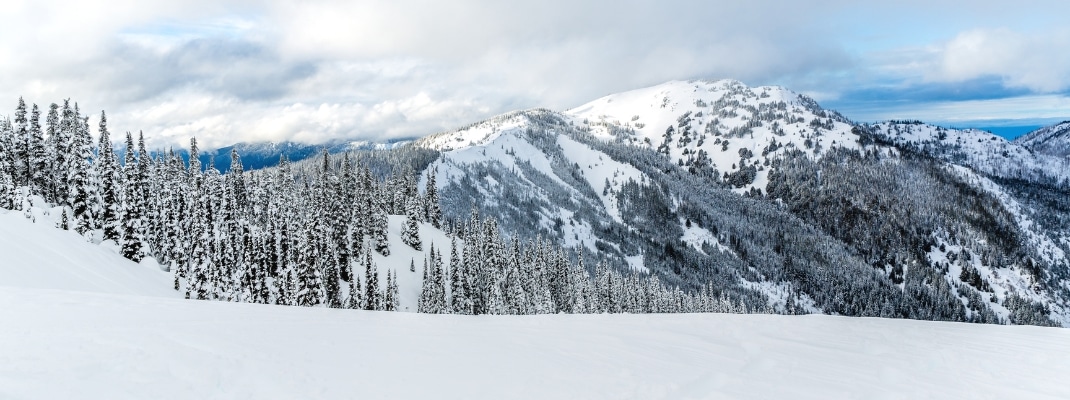
Olympic National Park in Washington State, is our last winter, must-see national park! Considering the snow-covered mountain peaks and sparkling evergreen trees, we couldn’t possibly leave this beauty off our list.
The majority of the park will remain open during the winter months. However, there are fewer ranger-led programs and facilities open during this time of the year. This park is generally covered in deep snow this time of year, so it is essential to check the weather conditions with the NPS on the day of your trip. Conditions are known to change quickly.
You will most likely find yourself over at Hurricane Ridge, where winter activities abound. Here you can find opportunities for both cross-country and downhill skiing, snowboarding, sledding or tubing, and snowshoeing.
We hope you will have a glorious winter road trip in America’s beautiful national parks. If you prefer to get trip suggestions on-site, most of the visitor centers in these parks are open year-round. Stop by one and talk to some of the rangers who can give you some excellent suggestions for sites to see and things to do! Also, be sure to check for any safety conditions, advisories, or special gear you might need to traverse the park during the winter.
Winter Activities You Can Enjoy at Olympic National Park
- Snowshoeing or cross country skiing in the Hurricane Ridge area, where you’ll find stunning scenery and views of the Olympic Mountains
- Hiking through the park’s temperate rainforests, which remain lush and green throughout the winter season
- Beachcombing along the Pacific coast, where winter storms create dramatic seascapes
- Spot migratory birds taking the skies in their thousands as they head to warmer climates
Winter Weather Conditions at Olympic National Park
The park’s coastal areas and temperate rainforests typically see mild, wet winters, with frequent rain and temperatures ranging from the mid-30s to 50s°F, and snow is rare in these lower elevations but is more common at higher altitudes. The Hurricane Ridge area, in particular, receives significant snowfall, often several feet deep, making it a popular spot for winter sports, and temperatures in this area can range from the teens to 30s°F, with wind chills making it feel even colder.
Joshua Tree National Park
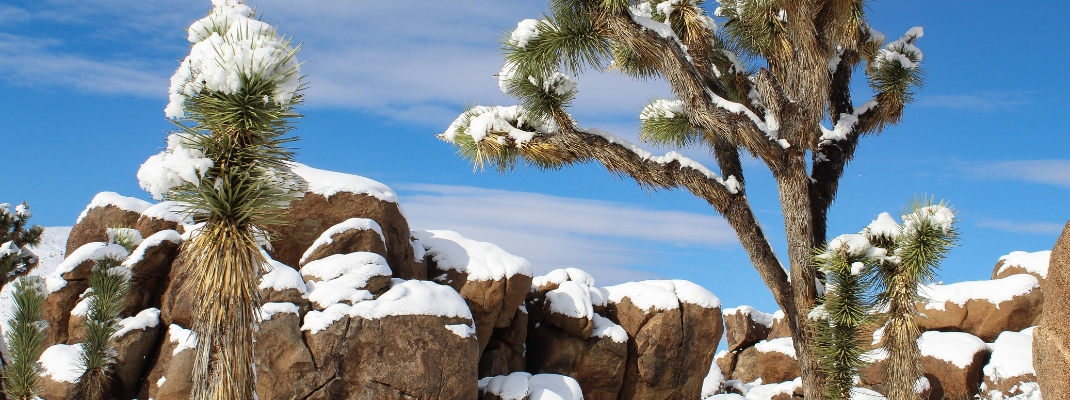
While it is best known for its unique Joshua trees, rugged rock formations, and expansive desert landscapes that shine during the warmer months, winter is also an ideal time to visit Joshua Tree National Park, as the scorching summer heat is replaced by cooler, more comfortable temperatures.
The park is also less crowded during winter, making it much more peaceful than its busier summer months, and the clear, crisp air enhances the already stunning views, whether you’re hiking through Barker Dam or Hidden Valley, climbing the park’s famous rock formations, or simply enjoying the serenity of the desert.
Stargazing is another highlight at Joshua Tree National Park, as the long winter nights and minimal light pollution create perfect conditions for observing the night sky. The winter wildlife here is another draw, with a chance to spot migratory bird species and resident creatures that call Joshua Treen home all year round.
Winter Activities You Can Enjoy at Joshua Tree National Park
- Hike popular trails like Barker Dam and Hidden Valley, where the cooler temperatures make for more comfortable exploration compared to the summer months
- Rock climbing on the park’s famous granite formations, with fewer crowds and milder conditions
- Birdwatching and wildlife spotting
- Stargazing the clear, dark winter skies
Winter Weather Conditions at Joshua Tree National Park
Winter weather at Joshua Tree National Park is pretty mild, with daytime temperatures ranging from the mid 50s to 70s°F, making it an ideal time for outdoor activities. Nights, however, can be quite cold, with temperatures often dropping into the 30s°F or lower, especially in the higher elevations of the park. Snow is rare but can occasionally dust the higher peaks, adding a touch of magic to the desert landscape.
Pinnacles National Park

If you’re looking for a central California winter camping destination, you can’t go wrong with Pinnacles National Park. Named after its dramatic rock spires, formed millions of years ago by volcanic activity and tectonic forces, winter is an excellent time to visit, as the cooler weather makes hiking and exploring the park’s rugged terrain more comfortable compared to the scorching summer months.
Pinnacles National Park is divided into two distinct regions: the east and west sides, which are connected by hiking trails but not by roads, and the park is home to a variety of wildlife, including the endangered California condor, which can often be seen soaring above the rocky cliffs.
The winter rains also bring a fresh vibrancy to the landscape here, with green hillsides and blooming wildflowers adding to the park’s natural beauty. Whether you’re interested in hiking, rock climbing, or simply taking in the views, Pinnacles National Park offers a perfect winter escape.
Winter Activities You Can Enjoy at Pinnacles National Park
- Hiking the High Peaks Trails for panoramic views across the park and the opportunity to get up close to the rock formations
- Birdwatching, particularly for the California condor, which can often be spotted soaring high above the park
- Exploring the park’s talus caves, which remain accessible during winter and are home to several bat species
- Rock climbing the park’s challenging routes, with the cooler temperatures making for ideal conditions
Winter Weather Conditions at Pinnacles National Park
Daytime temperatures at Pinnacles National Park range from the 50s to 60s°F, providing ideal conditions for hiking and outdoor activities. Keep in mind, however, that the nights can be chilly, often dipping into the 30s°F, so visitors should come prepared for colder evenings. The park also receives most of its annual rainfall during the winter months, which can lead to slippery trails and water-filled talus caves, but also brings a lush, green transformation to the landscape. Snow is very rare at Pinnacles, but winter rains can occasionally make some trails and areas temporarily inaccessible.
Grand Canyon National Park
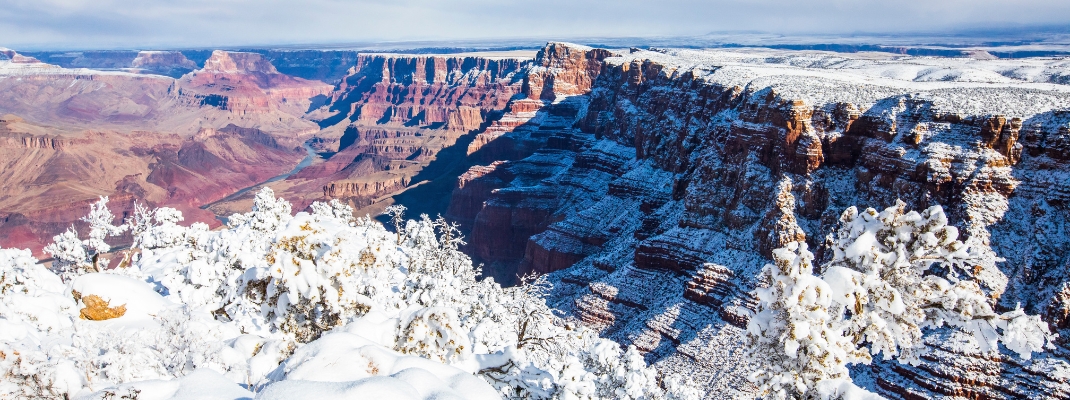
The entire landscape at Grand Canyon National Park is transformed during the winter months, and the South Rim, in particular, becomes a peaceful setting that is worlds apart from the usual busyness of the summer months. The cooler temperatures also make activities like hiking and rock climbing a lot more comfortable, while the crisp, clean air improves visibility and makes the expansive vistas even more breathtaking.
Winter is also an ideal time for photography here, as the low angle of the sun creates longer shadows and highlights the intricate details of the canyon’s rock formations, while the chance of snow adds a magical touch to the landscape, particularly in the early morning or late afternoon when the light is soft and golden.
One important point to keep in mind if you’re planning to visit the Grand Canyon National Park during winter is that the North Rim is closed during the winter months due to heavy snowfall, so winter travelers should plan to explore the South Rim only.
Winter Activities You Can Enjoy at Grand Canyon National Park
- Hiking the South Rim trails for some of the most incredible views across the Grand Canyon
- Attending ranger-led programs to learn more about the canyon’s geology and winter ecology
- Photographing the snow-covered canyons
- Stargazing, with clear winter skies providing some of the best views of the stars, planets, and meteor showers
Winter Weather Conditions at Grand Canyon National Park
Winter at Grand Canyon National Park, particularly on the South Rim, is marked by cold temperatures and the possibility of snow, creating a striking contrast against the canyon’s red rock formations. Daytime temperatures typically range from the mid 30s to 50s°F, while nighttime temperatures can drop into the teens or lower, especially with wind chill. Snow is most common in December and January, and while it often melts quickly on the canyon floor, it can linger on the rim, making for slippery conditions on some trails.
Be Prepared for Your National Park Visit This Winter
Road trips don’t have to be taken exclusively in the summer, and by venturing out in the winter, you’re able to see these national parks in a whole new way. But to make sure you’re as safe and as comfortable as possible, it’s important you’re in the the right vehicle before you embark on your winter vacation.
Contact the expert team at Travellers Autobarn at our Los Angeles, Las Vegas, or San Francisco locations to sort your campervan hire. Whether you’re looking for a spacious camper for 5, or a snug camper with a built-in heater, we have you covered.
Every campervan rented from Travellers Autobarn between November and March also comes with a Free Bonus Winter Pack, which includes a heater, hot water bottle, and sleeping bags, so you can rest assured you’ll be travelling in comfort and style. Need a little extra to deal with the cold? We also offer a premium winter pack, which includes a heated car blanket and a portable power station.
For more winter road trip tips read through our Van Life Guide to Winter Road Trips in a Campervan!
About the Author
Bastian Graf
Bastian is the Sales & Marketing Manager here at Travellers Autobarn. He holds a Master of Commerce in Marketing and International Business Management, and 20+ years experience in campervan hire, road trips and travel.

